
Welcome to the second issue of Moody Magazine: Into the Moodyverse
Did you miss us?
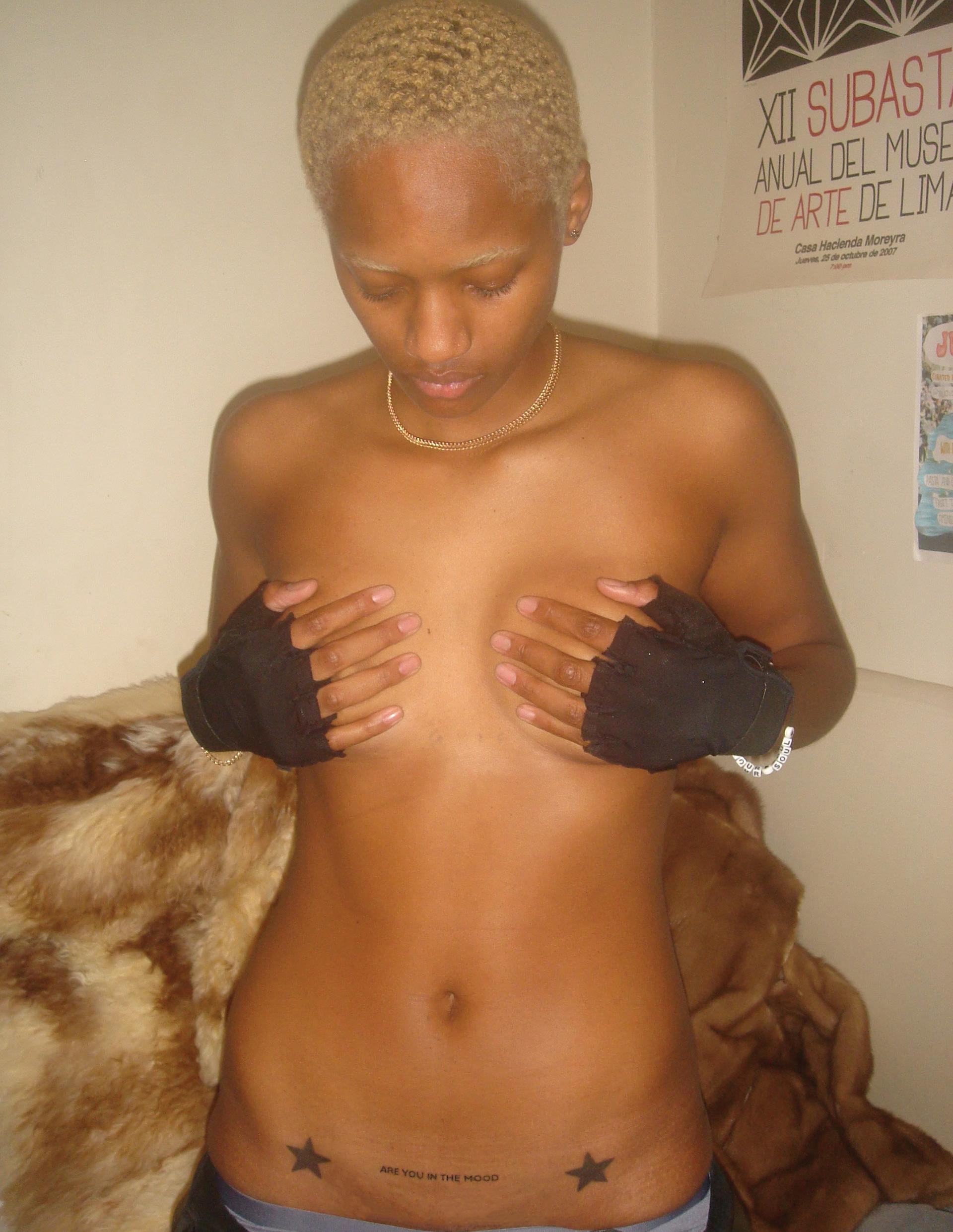
When we started Moody in our little college community, a place starving for something authentic, we could have never imagined it having the reach, impact, and influence Moody does today. The Moody message now reaching people all across the world, we could not be more grateful. Thank you to everyone who has supported and helped us along this journey. Thank you to our hardworking and passionate team, the Moodyverse exists because of all of you. Seeing the way our Moody family has evolved and expanded has been so fulfilling.
For those of you new to Moody, we welcome you into this space. Here, we work to break down stigmas and taboos, striving to encourage transparent conversation within our generation. Proceed with an open mind, this magazine could entirely change your perspectives and shift your preconceived notions. The content in our magazine may be triggering to some readers, but we believe that in order to truly progress, we must work to initiate these uncomfortable conversations – without judgment, without old-fashioned ideologies, without fear.
In this issue, we will time travel through the past, present, and future. Everything affects everything. In the “past,” we touch on personal stories that reflect the dangers of an outdated society governed by stale values. In the “present,” we provide progressive commentary about the social and political climate of our modern world today. Finally, in the “future” we explore the possible outcomes of our present actions as a society if we continue moving in the direction we are moving. Will today’s choices create a dystopian or a utopian world?
Throughout the mag, we will explore what it truly means to be moody in relation to our ideal world, the Moodyverse. So we ask, once again…
2
Model by Lisa Emanuel
THE WOMEN BEHIND MOODY
(& their teams)
Jennie Bull + Emma Lueders (Co-Founders and Editors-in-Chief)
Colette Goldstein (Head Writer)
Bella Alvarez, Isabel Bekele, Zoë Boise, Sarah Dickerson, Natalie Fournell, Layla Harrison, Nick Held, Zanyiah Hill-Milling, William Khabbaz, Tracy Lee,Jack McCarty, Caitlin McGonagle, Margo Moran, Rachel Musman, Caroline Nolan, Jackson Olenick, Nick Robbins, Fabi Suàrez, Eric Ticse, Vanessa Walker, Audrey Weisburd
Guilette (Chief Financial Officer)
Alena Ellis, Mia Ignazio, Sara Kirschner, Jah Levy, Soph Lucina, Jace Williams, Anahit Yakubovich, Eden Yaloz

Mia Hernandez (Photo Liaison) Soph Lucina (Head Editor,
Head Graphics)
Tate Canyon, Jade Cyrus, Maddy De Vera, Zanyiah Hill-Milling, Molly Irland, Olivia Isaacson, Mary Kennelly, Kelly Kringen, Lucas De Syllos Marangoni, Jero Perez, Noa Putman Jood Al Saleh, Olivia Swaab
Hayley Ipsaro (Public Relations Director)
Gracie
Layla Harrison (Social Media Director)
Vivian Li (Head of Outreach)
Jood Al Saleh, Clara Olsen, Allison Oey, Camille Pitaniello, María Quiñones, Olivia Swaab
Jood Al Saleh, Clara Olsen, Allison Oey, Camille Pitaniello, María Quiñones, Olivia Swaab
Secretary: Roxana Berentes Jaden Bradlow, Sara Kirschner, Kari Wilson
Tal Ben Ari, Gabrielle Einhorn, Caroline Nolan, Ella Witmer
Design by Soph Lucina Illustration by Kelly Kringen
3

4

5
Design by Lucas Marangoni
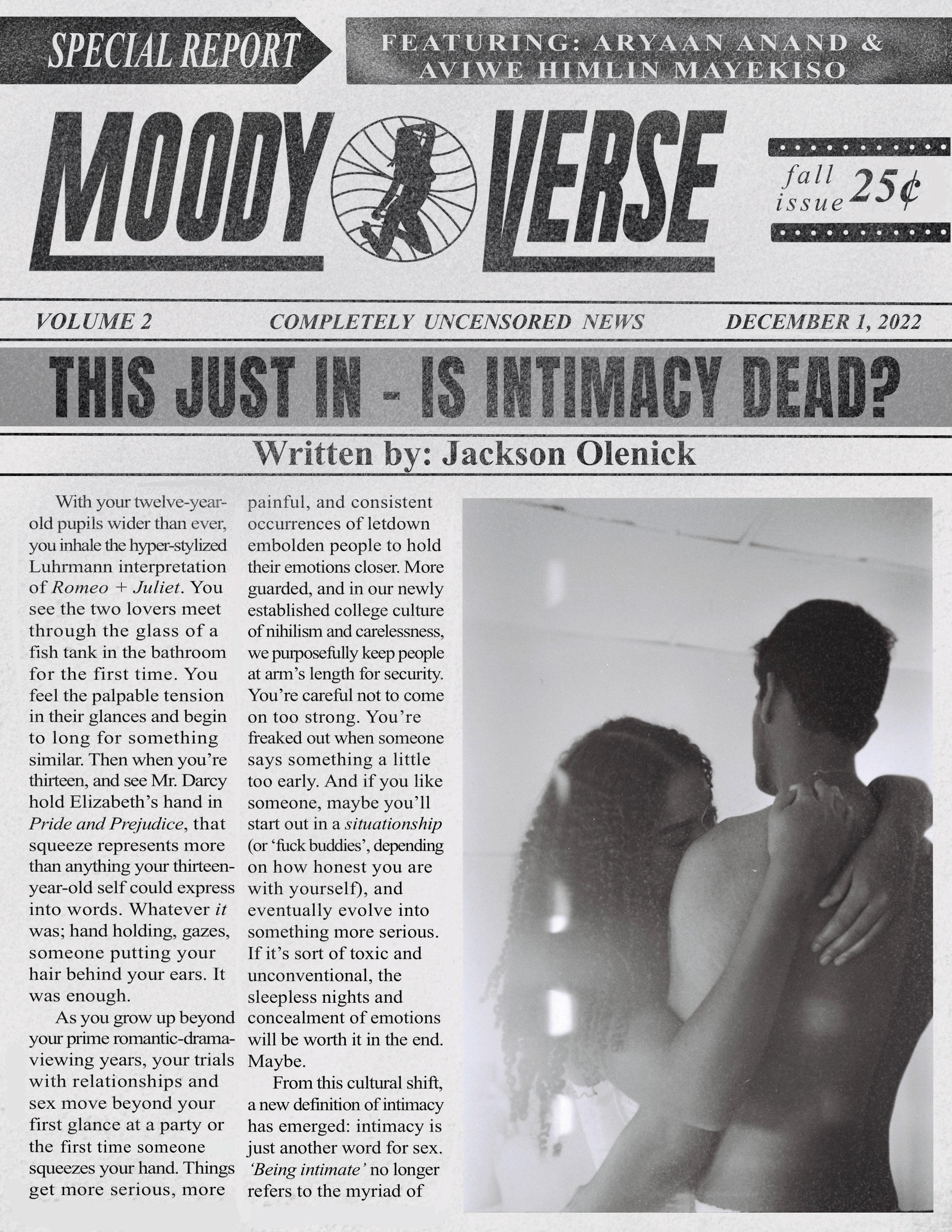
by
6
Photo
Mia Ignazio

Design by Madison DeVera 7
Grow up, My girl
And now it is time for you,
My girl
To grow up
Where you’ll grow inches with heeled shoes Where your lips will redden like legal wine Where your body and breasts will expand And your pockets will fill with posie and mace Where you’ll wander far and wide But not at nighttime

Where you’ll learn to guard your heart But more importantly your drink But more importantly your body Because private parts won’t stay private with enough force
And though you’ve grown in height and in width, My girl
He will always be stronger. Where kitten play turns into cat-calls And mini skirts will speak for you And a thread is sewn between those red lips, Because femininity will not grant you credibility Where true love’s kiss is only expected to be the beginning Because a kiss cannot possibly fulfill his happy ending, nevermind yours
Where the boogie man will lay in your bed much rather than under And politeness won’t cast the charm we always told you it would Where innocence can fly like away like a balloon Because you were led to loosen your grip Or because you were forced to loosen your grip These are the things that come with womanhood, But do not fret, My girl
Because blush can always conceal your stream of tears
And other girls have been through much worse
8
Photo by Mia Ignazio
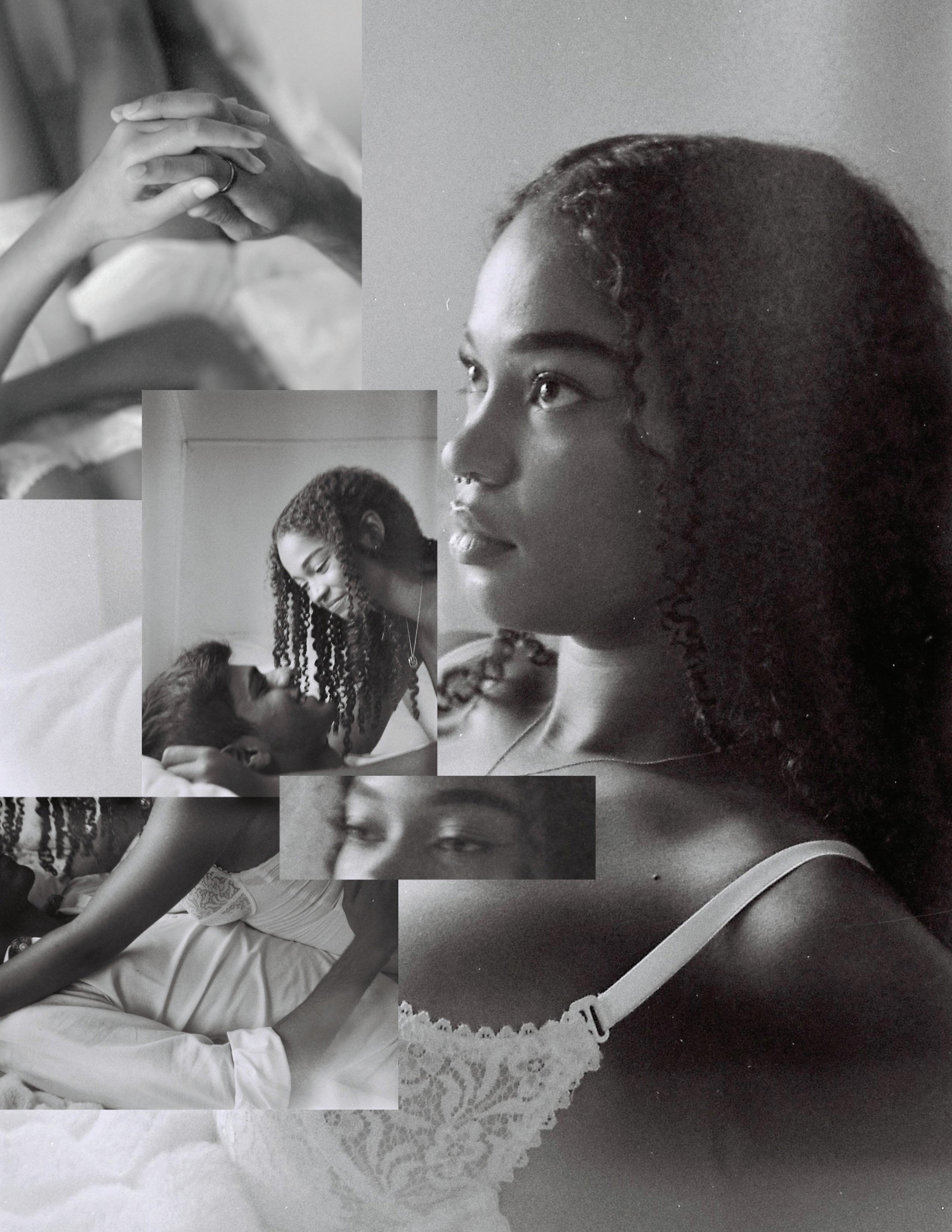 Design by Madison DeVera 9 Model by Aviwe Himlin Mayekiso
Design by Madison DeVera 9 Model by Aviwe Himlin Mayekiso

10
Photo by Mia Ignazio
Forbidden Love
 Written by William Khabbaz
Written by William Khabbaz
The boy with brown hair and blue eyes, that’s what I called him. The first boy to look through my eyes and see the love buried underneath my soul. His name is a secret, but the feeling we shared could have been felt by the entire world. Eventually fading into the background of my life, he left a small stain on my heart that now just lingers over me. The story has a rather frustrating ending, but the progression and the love felt within that span of 4 months has lasted forever.
We met for the first time at my 18th birthday party. Rainbow flags everywhere, rainbow jell-o shots flowing, and all my closest friends in one room; “The Gayger” was my claim to fame as a young gay male in Southwest Florida. Out of the hundred people in my house, he was the only one I wanted to spend time with. A mutual friend introduced us and the rest of the night was consumed with great conversations and a handle of ciroc. I truly melted for the first time in my life.
He was the eleventh grade class president; The boy with brown hair and blue eyes was smart, popular, strong, tall, and of course handsome. Everyone knew his name, which meant everyone knew his business. For the beginning of our friendship, we chatted everyday, all day long. Texting him had the same feeling as spreading butter on toast; From Snapchat to iMessage, there wouldn’t be a single minute without
hearing from him. He was my rock, but the type of rock that’s at the bottom of the river where no one can see.
We slowly started hanging out more. He only lived 5 minutes away and he loved to just drive around the city for hours. He would pick me up, speed down our neighborhood roads, and we would just laugh about our days. He was everything I wanted, but I just didn’t know how to say it. Looking at him was the most painful experience of my life. All I wanted was to reach out my hand and for him to hold it. I wanted to grab his face and kiss him, but I worried that he would never talk to me again. I worried he would be uncomfortable.
I ended up writing him a letter. It was the first time I truly told a boy how I felt about them. I wanted him to love me back. I wanted him to read this letter, swoon over my penmanship, and finally give me the kiss I had been waiting for. Obviously through my tone you can tell that didn’t happen, but he wrote me one back. Our love was mutual, but the internalized homophobia clouding that boy’s mind never allowed him to let me into his heart.
For weeks later, we continued to write letters and leave them in all sorts of places for each of us to find. We would grab lunch, play Nintendo Switch at the beach, listen to music, and just enjoy our lives together. We would talk about the one day he might build up the courage to kiss me. We would both talk about a world where we could just be together. But of course, in his mind, it was all fantasy.
Considering we went to a high school in Florida, I am shocked it only took a couple months for people to notice us. We had never kissed, never spoke to each other in person during school hours, and our phones were glued to our hands. We lived in a secret castle in
the sky that would soon be shot down for the world to see. Voices would linger, people would talk, but it never stopped us from just being friends. My infatuation for him was never questioned until a rumor surfaced that nearly shattered my life at the time.
With the whole school’s eyes on me, I was sad, confused, and angry but the one person who I thought could understand was my biggest enemy. The boy with brown hair and blue eyes turned away from me for the first time since we met and that was history. He couldn’t fathom a rumor about him being spread and didn’t care what he needed to do to get it erased from his life, including letting go of me. I was just someone he used to know. A figure thrown off the cliff straight into the depths of my own nightmare.
He eventually fell in love with a girl and I was still stuck there, alone and unsure of my life. Love is a game I will never know how to play. I have been used, thrown out, and discarded but love is still strong in my heart. As I’ve grown older, I realized that love should never be something you have to work for; every person deserves to be loved in a multitude of ways. It should be easy, freeing, and an opportunity to learn your best qualities.
I will never forget the boy with brown hair and blue eyes, but he did give me the chance to learn that I deserve better, so for that I thank him.
11
Design by Zanyiah Hill




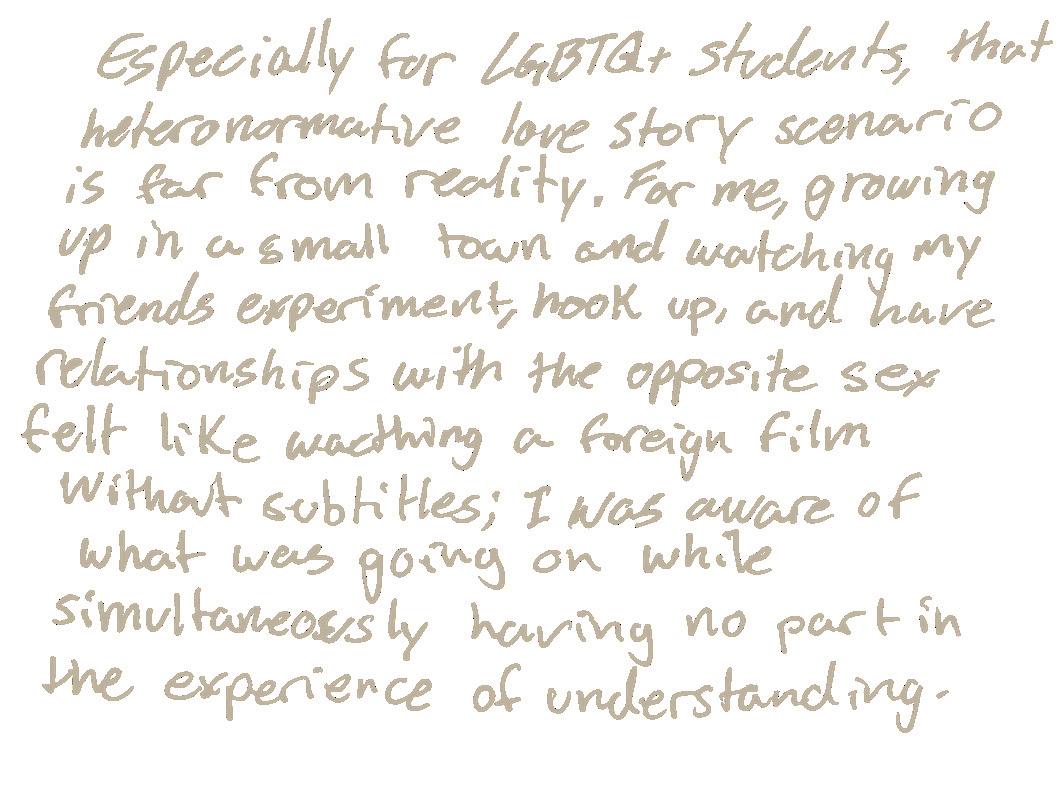
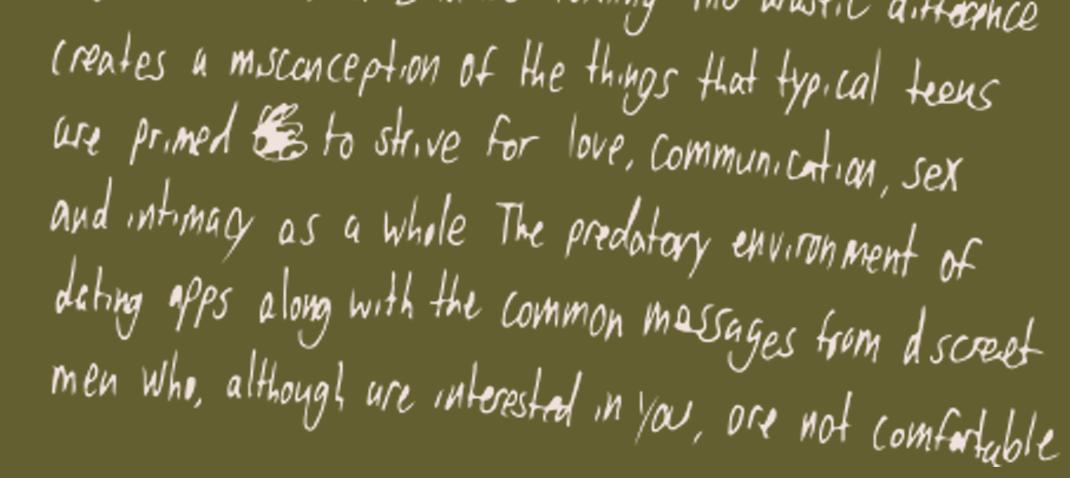
12
Photo by Mia Ignazio
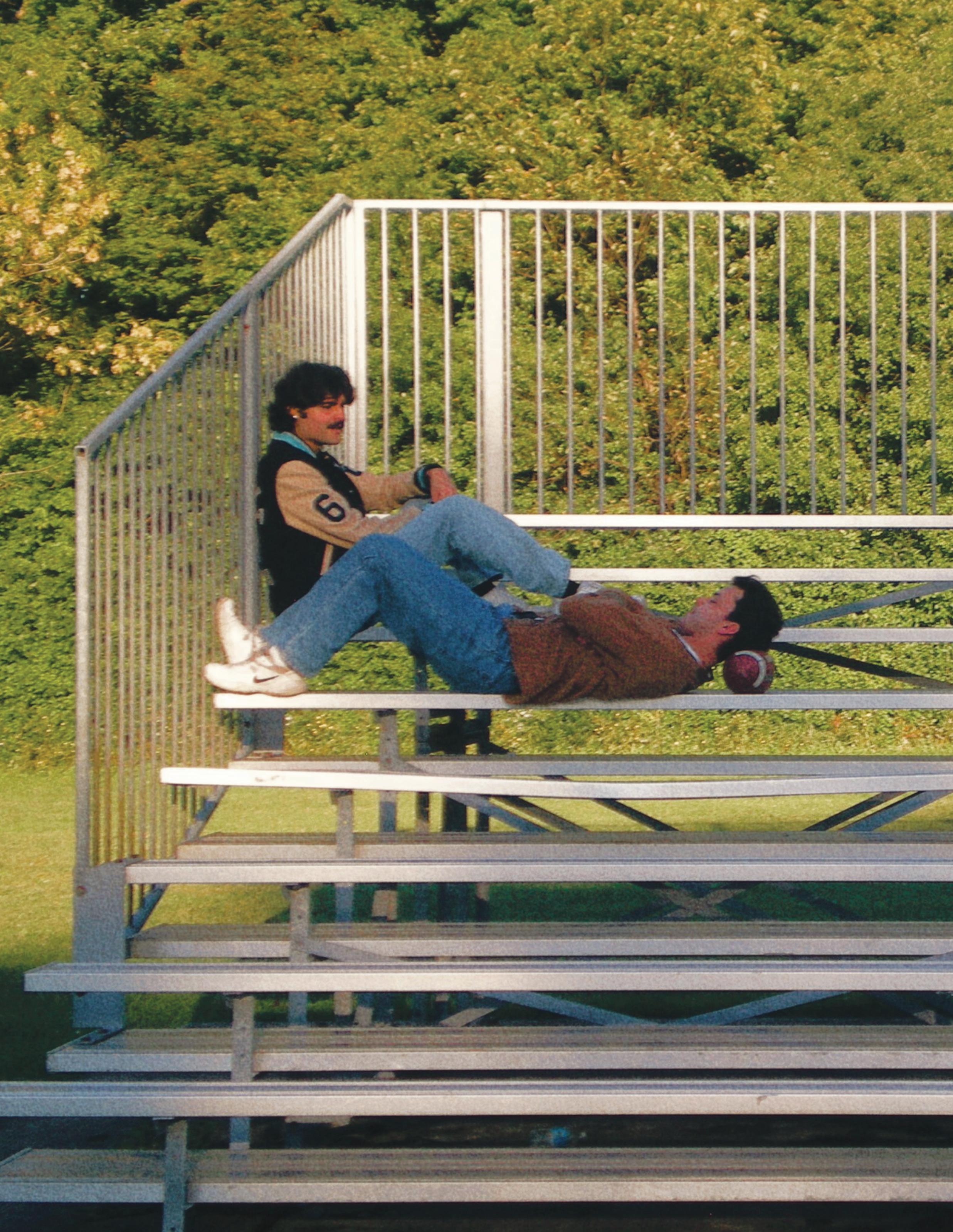
13
Design by Soph Lucina
A Spoonful of Sugar: Confessions of a Sugar Baby Athena A.
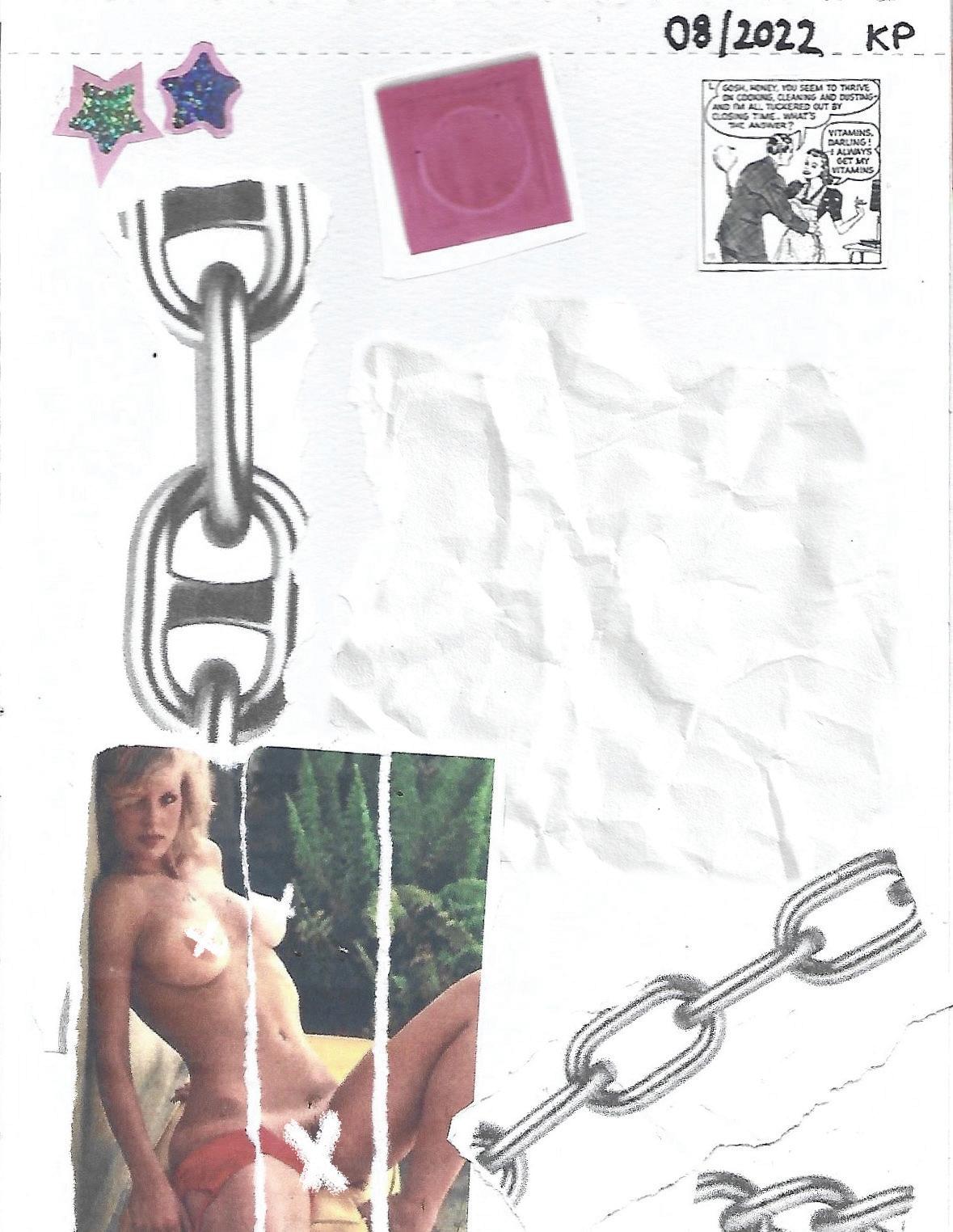
I can’t tell myself I’m beautiful I’m anything but that given what I have done Even he told me “It’s not that special if everyone has seen it.“
I used to think I was beautiful and unique I used to think I was different because of how I perceived the world
I used to think I was different because no matter how hard it got, I would always stay positive
I stopped thinking I was beautiful and unique when he said “It’s not that special if everyone has seen it.“
I despise doing what I do I am constantly on display for all the wrong reasons
I am only portrayed as an object Nothing but a quick fix to these men But I have no one to blame but myself I am addicted to the quick easy cash So I continue selling my image I am not on display for my beauty and intelligence
I am only displayed for my body and fake giggles
I boost the self esteem of men while I allow them to diminish mine
Collage by Kat 14
Growing Pains
By Z. Hill
enough of your erotic gaze i don’t want to be looked at that way your eyes are marbles, cold and blank no longer the pearls of youth they used to be oh to be seen from the heart instead of for head

Design by Alena Ellis 15
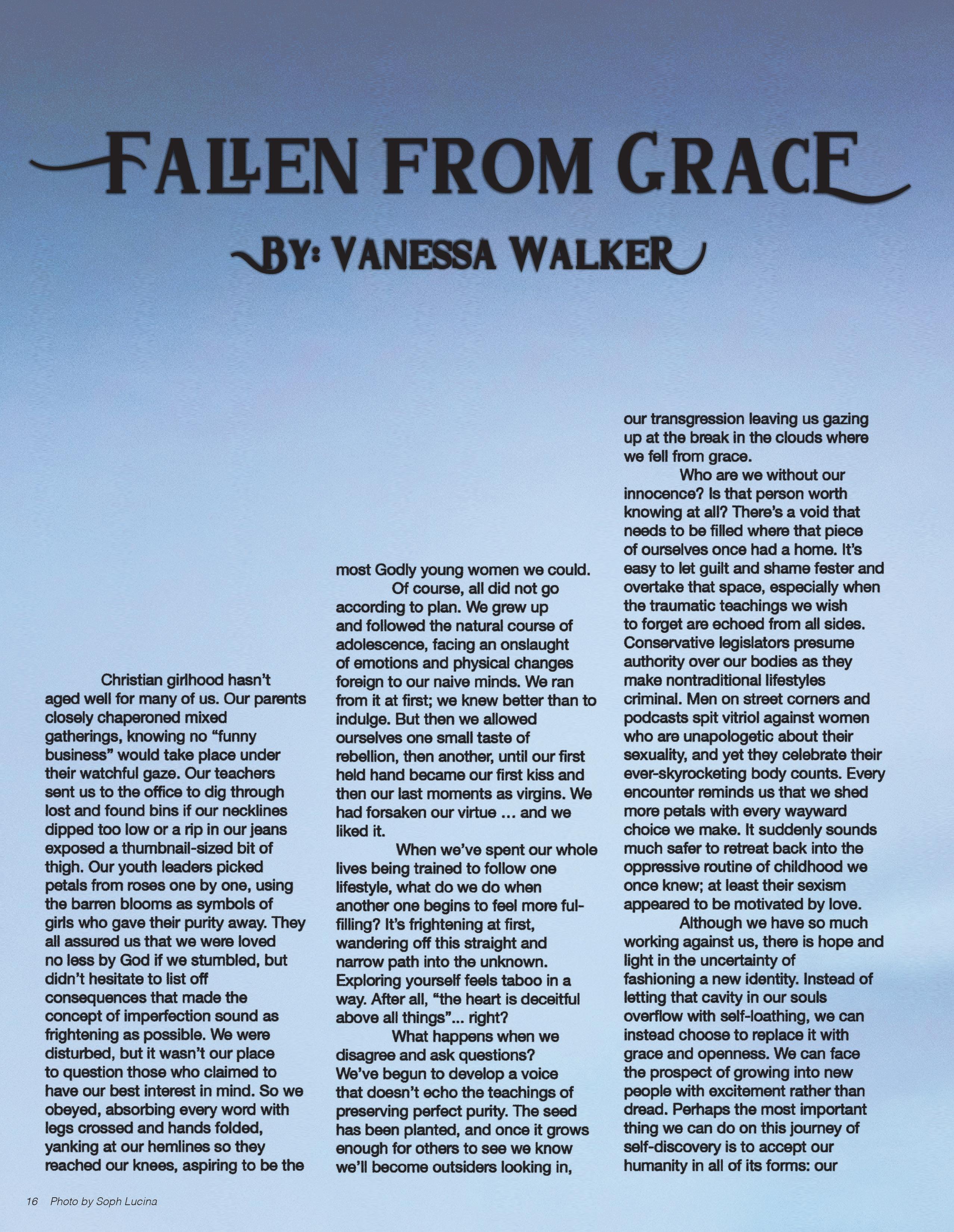


18
Photo by Soph Lucina
 Model by Katie McPeak 19
Model by Katie McPeak 19
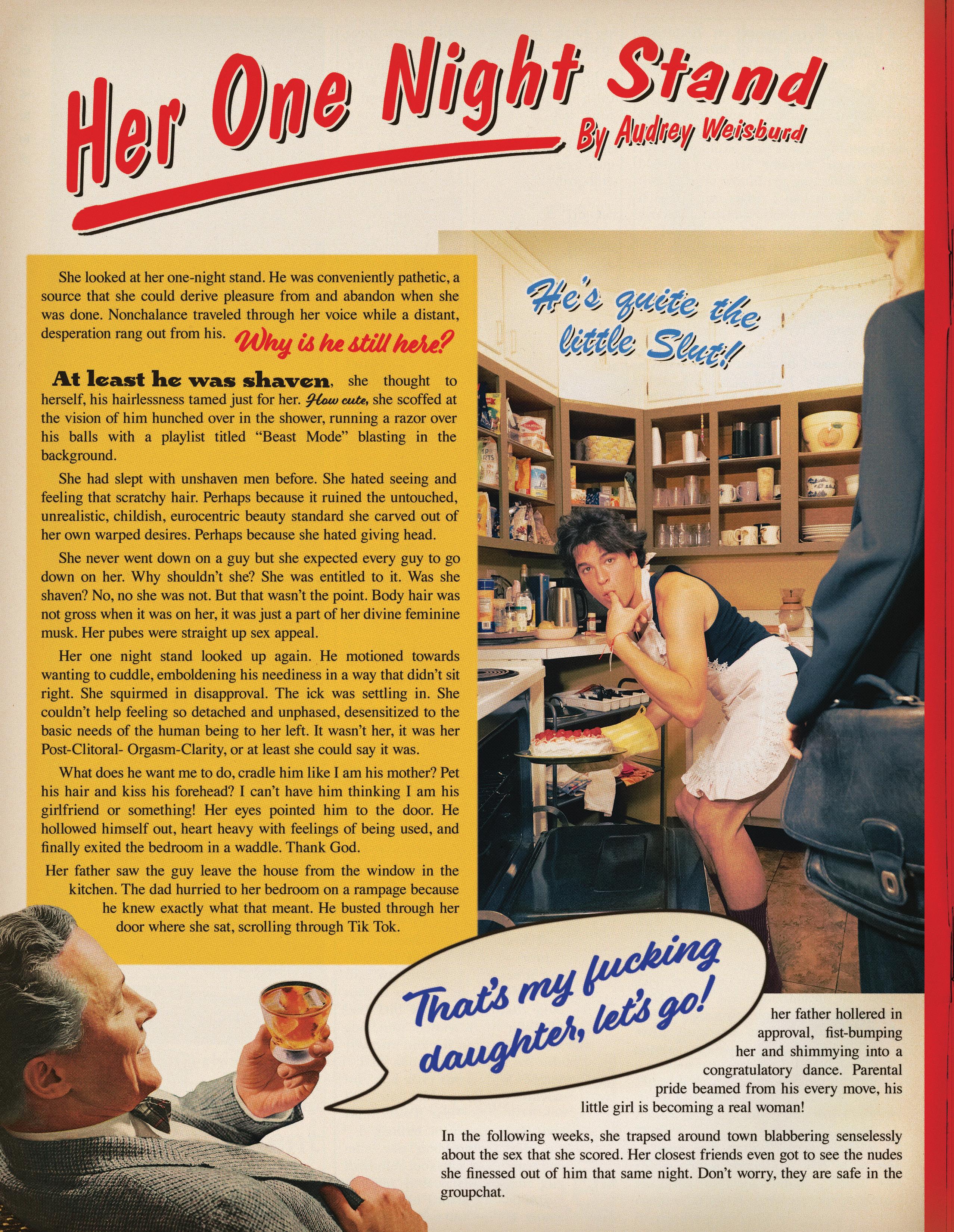
20
Photo by Soph Lucina

21
Design by Lucas Marangoni
The fine line between consent and coercion.

DOGS AND THEIR CHEW TOYS
EAVESDROP
PRESENTS IN ASSOCIATION WITH MOODY MAGAZINE “DOGS AND THEIR CHEWTOYS” FEATURING COCO GOLDSTEIN AND NICK HELD

22
MUSIC BY ERIC TICSE PRODUCED BY AUDREY WEISBURD AND KYRA ZABRETSKY SCREENPLAY BY AUDREY WEISBURD DIRECTED BY KYRA ZABRETSKY
SCAN HERE TO WATCH:
AM I HOT OR AM I BEING FETISHIZED?
WORDS BY: Fabiana Suàrez
Latina women. Big booty Latinas. Freaky, kinky, spicy. The anger issues and the accent make it hotter. Big boobs—and even bigger attitudes. This was the idea in everyone else’s head that defined who I was before I even opened my mouth, let alone my legs. I knew what my hookups were expecting: an accent like Sofia Vergara’s, a body like Autumn Falls’, and absolutely no boundaries. This was my definition of what it meant to be stereotypically Latina. This definition made me feel as though I was never, and could never be, Latina enough. Every time I set a boundary, every time I said no, I felt as if I was letting someone down. So I would push myself. Change the things that were in my control, even if it didn’t feel good. Years and years of the same hurt and internalized shame does damage. I lost who I was, stuck between wishing I embraced my culture more and wishing I was white-passing. My mom used to tell me, “Querer ser otra persona es un desperdicio de la persona que eres.” Wanting to be someone else is a waste of the person you are. I used to roll my eyes, shrug her away. But she was right- I had to learn to love myself for who I was first. I learned, after oh so many years, that your ethnicity is not based on your looks and your performance, nor the stereotypes that surround it. It is based on what it means to you- family, culture, or tradition. You don’t have to earn the right to come into your sexual preferences the way you want to, and you don’t need to change to better fit into stereotypes that are unfairly forced upon you.
WORDS BY: Tracy Lee
Sexually submissive. Tame and timid. Stereotypically smart. That’s what most guys expect from me because of the features that the media accentuates about Asian women. I have gotten used to expecting that any guy that wants to get with me has a “thing for Asians” - I am almost always right. Usually, once a guy admits to his fetish, I get to hear all the same stereotypical explanations as to why they like Asians so much- specifically in bed. Everything ties back to their idealization of Asian women to be submissive and dominatable. Most of these perceptions - well, more like misconceptions - are because of how Asian women are portrayed in the media: specifically in porn and anime. However, I don’t fit this media mold. I am proud of my bold personality, but sometimes it also makes me feel insecure. Society already teaches women to act more disciplined, but media portrayals hold Asian women to another standard. In fact, men have directly said things to me like, “you’re so loud for an Asian girl.” The accumulation of all of the overwhelming stereotypes have affected the way I perceive myself. In fact, because of this build-up, I have grown to receive an unsettling form of validation when my hookup tells me that I’m “hot for an Asian girl.” Backhanded “compliments” like this one catalyze my insecure thoughts. Because society has mostly discussed my beauty in terms of stereotypes, I feel like my attraction is confined to these set expectations - that I am only “hot for an Asian girl”. But in reality, beauty is defined in your own terms, not what society expects from you.
COMBINED STATEMENT
The fetishization of underrepresented women, while seemingly neutral and even affirmative on its face, is just a way to sugarcoat bias and racism. Fetishization is not flattering. It is dehumanizing. These ideas start young and are reinforced by the porn industry, toxic ideologies, and ignorant education systems. They are reinforced by the way underrepresented women are portrayed in the media. And while the expectations of fetishized underrepresented women are rarely achievable, the consequences are very damaging to a woman’s idea of her own attraction and sexual preferences.

23
Design by Soph Lucina and Jennie Bull
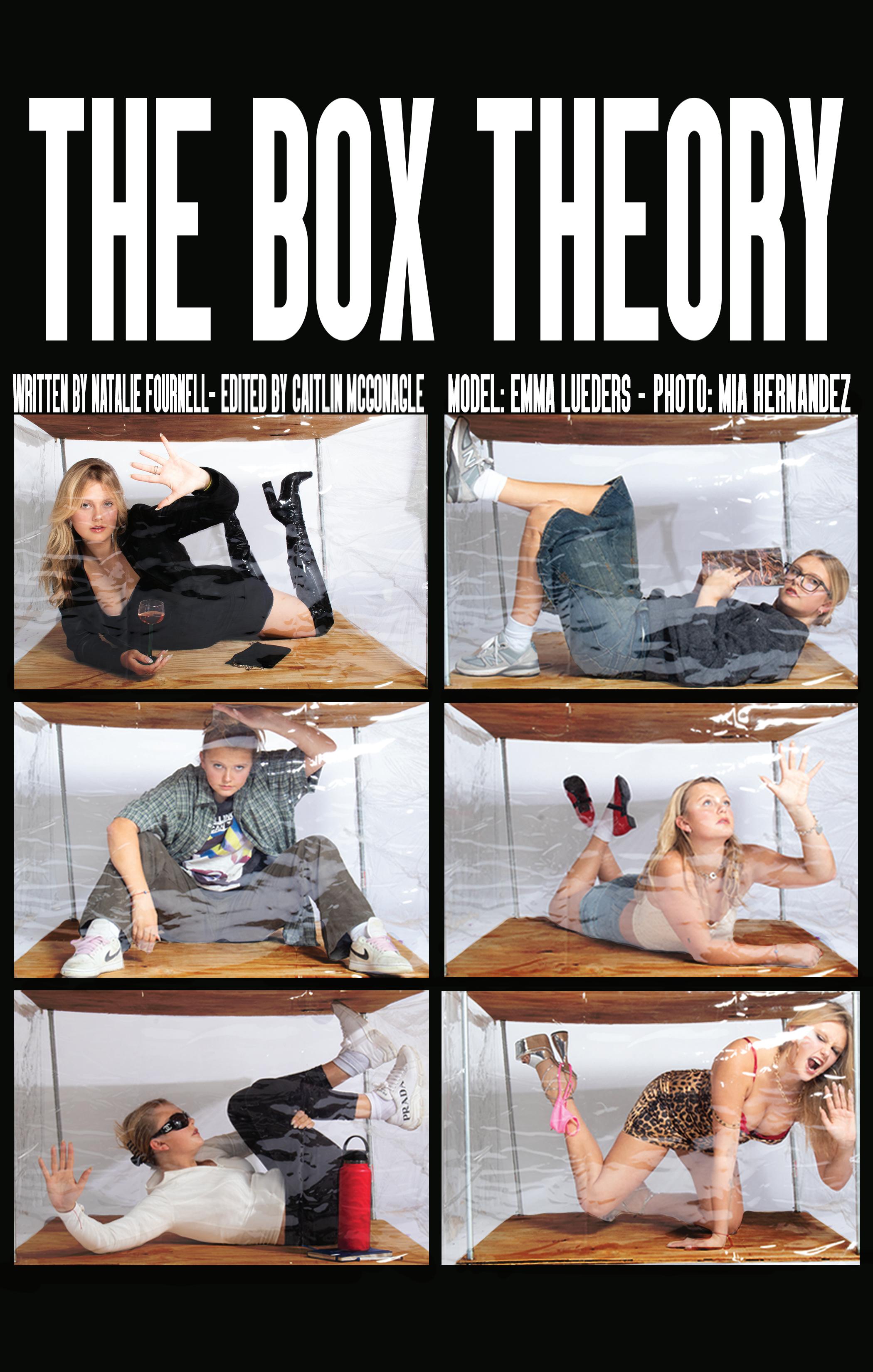
24
Photo by Mia Hernandez

Design by Olivia Swaab 25

26
Photo by Anahit Yakubovich

27
ANTAGONIST MIRROR in the

I don’t know what I look like. I know that I have brown hair and blue eyes. I know I am pale in the winter but freckled in the summer. I know that I have small ears and weird-looking feet. Yet, I still don’t know what I look like. I don’t see the smile that greets you or how my body feels in your embrace. Every time I look at myself, there is some new, distorted version of me staring back. At times, I am vain and easily captivated by my reflection. Other times, I stare in disbelief at how my flaws have ruined me. But usually, I don’t see myself at all. That can’t be what I look like, can it? These moments are scary, agonizing even, and have led to the development of obsessive and unhealthy self-image problems.
When you don’t know what you look like, you rely on others to tell you. In middle school, I developed breasts. Around the same time, I began getting positive attention from boys –attention that I had not known prior. Naturally, I attributed this special treatment to my newly acquired boobs, convincing myself that they were my most worthy feature and the only reason any boy would ever give me the time of day. I became an accessory for my chest, and I was literally unable to feel beautiful unless I exhibited some substantial and debatably age-inappropriate amount of cleavage. Luckily, this cycle was broken when I grew into my now entirely average boobs and realized that people still thought I was pretty. But my search for validation has remained hungry and relentless. In recent years, I’ve bothered my romantic partners, forcing them to be my mirror. Compliments turn to mere variables, the only metric with which I know how to assign value to myself. “Your thighs are so hot,” he might say to me. I don’t say thank you. Instead, I say, “why?” This is not a question of insecurity or disagreement but of investigation. What is it about them? Maybe if I know why you like them, I will know what they look like and whether or not I should like them too. Sometimes, I hurt my own feelings this way.
Too often, women fall victim to our relentless search for validation. We frantically grasp for an understanding of our worth and come up empty-handed time and time again. Rather than appreciating what we already are, we hyper-fixate on what we think we should be. We see ourselves as a blank canvas and use anything but ourselves as our reference. We may turn to social media, where it isn’t difficult to find some retouched, reshaped, refined images to aspire to. All we have to do is lose ten pounds, sculpt an ass, complicate our skincare routines, get lip-fillers, and chop our hair off.
And after we do all that, we still won’t be satisfied. The standard we are chasing is unattainable, so we prescribe our persisting dissatisfaction with a myriad of meaningless physical changes. These changes feed into already dysmorphic obsessions, creating cycles of unhealthy fixations and behaviors. Our days become tainted by time spent in the mirror, praying to finally see the other version of ourselves, the better version. We convince ourselves that we are starting to see ourselves while, in reality, becoming more unrecognizable.
28 Photo by Mia Ignazio
Caroline Nolan
I size myself up in the mirror, clenching to force the blood through my veins so I see the best version of myself. As I search the reflection’s eyes, I know the stranger staring back is not my ideal self. I strike another pose, shifting slowly, tracking each individual muscle’s movement. Each divot in my skin holds room for improvement. I must get stronger, bigger, and leaner by any means necessary. When I finally reach my body goal, I will finally be happy.

I’m always one rep, one set, one cut, one bulk, one mile away from my ideal form. When I look in the mirror, I feel the palpable disconnect between man and man’s body, a disconnect that can threaten masculinity and unlock a primal, competitive instinct. The man in the mirror, the gym, the photo, and the Instagram post pique an already ravenous hunger to be stronger. Pushing one’s body to the limit is a survival tool. Body dysmorphia is a disease rooted in perception, or more precisely, the inability to control perception. The lack of control over one’s surroundings turns something healthy (like exercise and nutrition) into a disorder. The clash between the inability to control how one sees themself and the ability to control one’s physical capability gives way to obsessive, compulsive behaviors. Taking drastic measures to control one’s appearance provides the illusion of control and stability. Dysmorphia nudges the finish line so that it remains just out of reach, as if it’s possible to finish this never-ending race until the breaking point.
I’ve seen men scrounge validation from sex, often disregarding their partner’s experience - their perceived sexual influence fueling this cycle. It’s easy to attribute this insecure behavior to “toxic” masculinity. Fair, maybe, but these attitudes are hardwired into young men’s psyches by generations of outdated practices. Men religiously follow fitness influencers promoting unrealistic body images. Some even launch their own personal fitness accounts, seeking validation from the male “health” community. Burdened by society’s dilapidated idea of masculinity, they rely on sexual partners, friends, gym-goers, and media for self-worth. Many destructive behaviors masquerade as “fitness,” including shunning mental health care and replacing it with exercise. Because men are socially conditioned to repress their mental and emotional needs to avoid appearing weak, many never learn how to process feelings. Instead, men look to “healthy” coping mechanisms like fitness and bodybuilding. Some form a healthy relationship with exercise. But for many, gym culture is an escape from everyday problems, creating a harmful, dependent relationship with working out - gym bros mealprepping borderline dog food and counting calories, pushing their bodies way past healthy limits to beat a personal record, cutting and bulking in cycles so frequently that their bodies can’t keep up. But the most harmful result is ignoring men’s mental health. It doesn’t help that society genders disorders, deeming body dysmorphia and eating disorders “feminine.” If men are to escape this trap, the first step is recognizing there’s a problem and that it is neither “masculine” nor “feminine.”
A perfect version of me, you, or anyone else does not exist. The disconnect between society, media, and the self breeds unrealistic expectations and goals. Truth be told, if your goal is happiness, you will not find that in a mirror. You will not achieve joy by fixating on a region of your body when your problems lie within. You have invented, labeled, and given life to the flaws that you resent. Whatever a “good-looking body” is to you does not necessarily make it a healthy body.
Physical health does not equate to mental health. Measuring progress, health, or happiness in numbers is not beneficial. The number on the scale, the number of likes on a post, or the number of reps you can do cannot be your metric for success. It really, really doesn’t matter. Happiness, confidence, and worth all come from within, so stop looking for outside parties to determine your perception of them. Body dysmorphia is not a disease of the body but one of perception. Hotness is a mindset. Don’t forget it.
Nick Held
Design by Noa Putman 29
Final Thoughts - Caroline & Nick

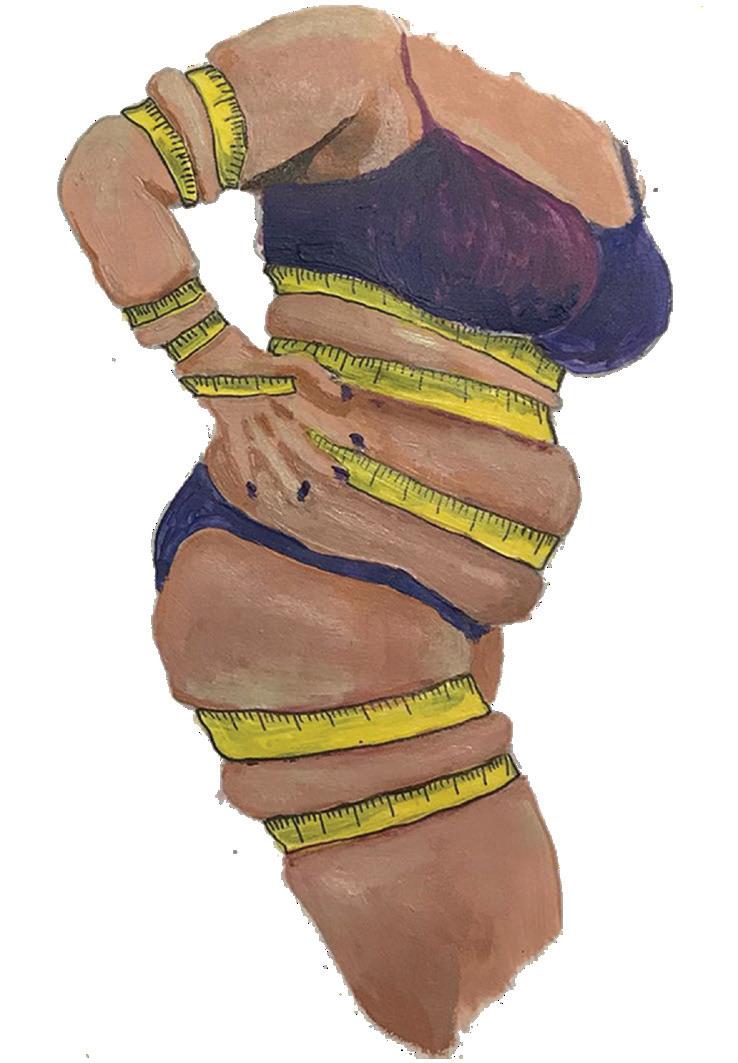

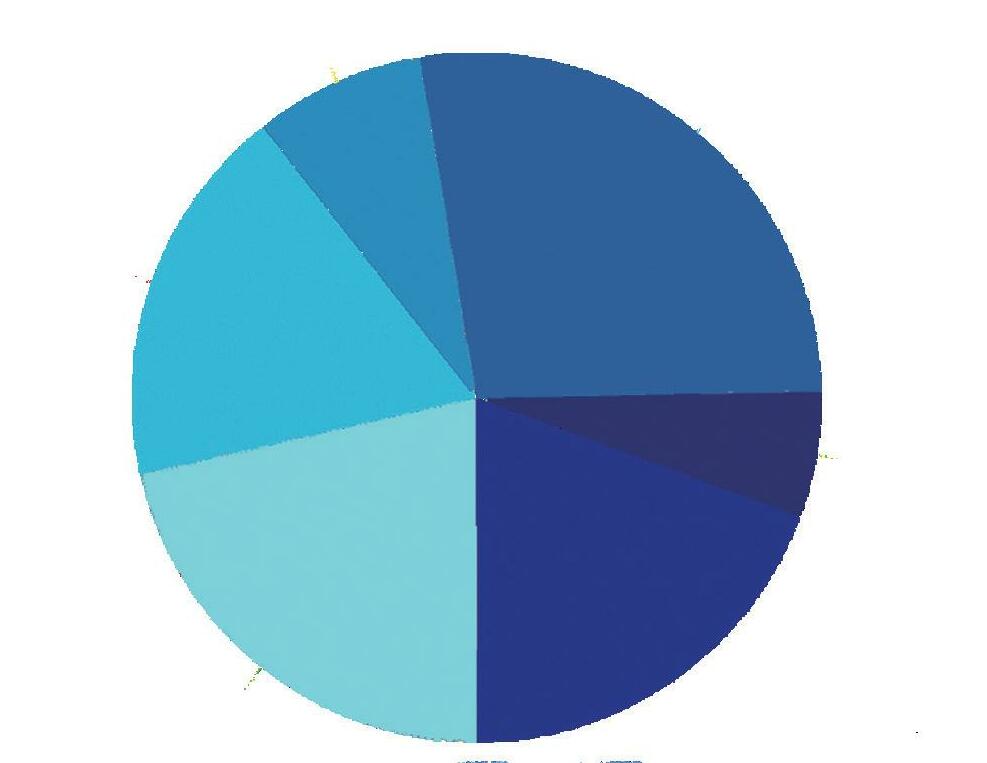
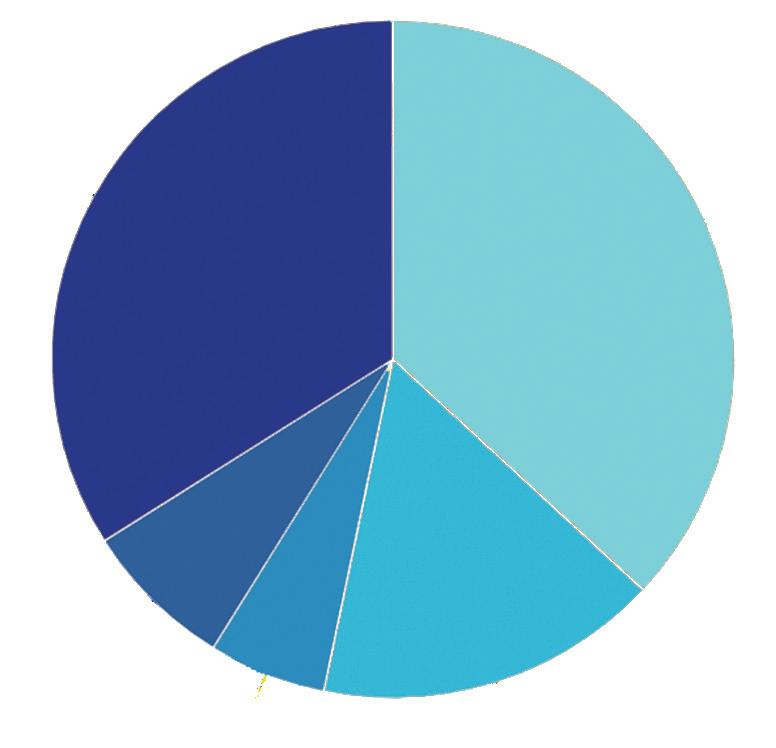
WHAT CHANGES HOW YOU DURING PHYSICAL INTIMACY, I’M THINKING ABOUT MY BODY... Comparison 27.3% Porn 5.9% Diet Culture 18% Social Media 21.4% Clothes 19.4% Hookups 8% Sometimes 36.9% Most of the time 16.3% All of the time 5.6% Never 7.2% Rarely 34% GENDER 64.5% identify as women 28% identify as men 7.5% identify as non-binary/other AGE 34.6% 20 years old 32.7% 19 years old 19.7% 21 years old 3.7% >19 years old 1.3% >21 years old Illustrations by Mei Reicover 30
THE BEST COMPLIMENT I’VE RECIEVED IS...
“YOU LOOK LIKE GOD SPENT HIS TIME ON YOU” “YOU MAKE ME A BETTER PERSON” “I LOVE BEING AROUND YOU” “YOU HAVE GREAT CONFIDENCE” “YOU ARE RADIANT” “WHEN I LOOK AT YOU I CAN’T HELP BUT SMILE” “YOU’RE THE KINDEST PERSON PERSON I’VE MET!” “YOU ARE SMART AND BEAUTIFUL” “DOING THE THINGS I LOVE” “WAKE UP AND SCREAM” “SPEAKING GRATITUDE” “GO TO THERAPY, JOURNAL, AND LET MYSELF CRY!” “TIKTOK THIRST TRAPS” “JERKING, SMOKING, AND DOIN’ ME” “REASSURING MYSELF AND GIVING MYSELF GRACE”
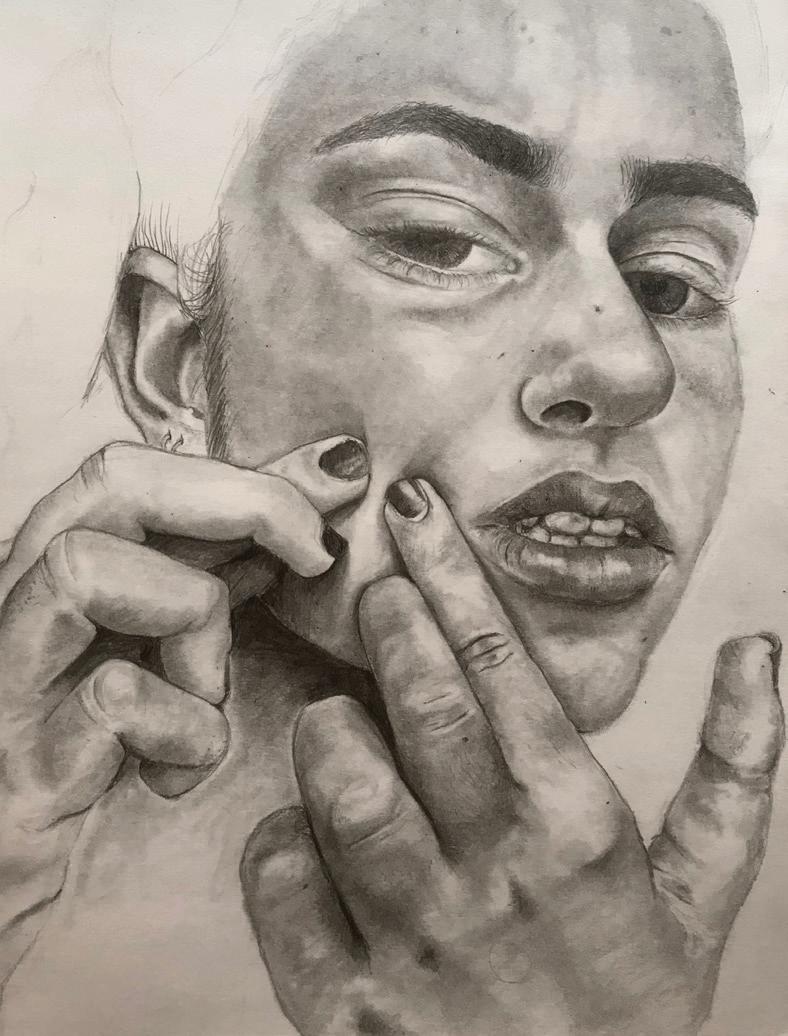
IN WHAT WAYS DO YOU PRACTICE SELF-LOVE?
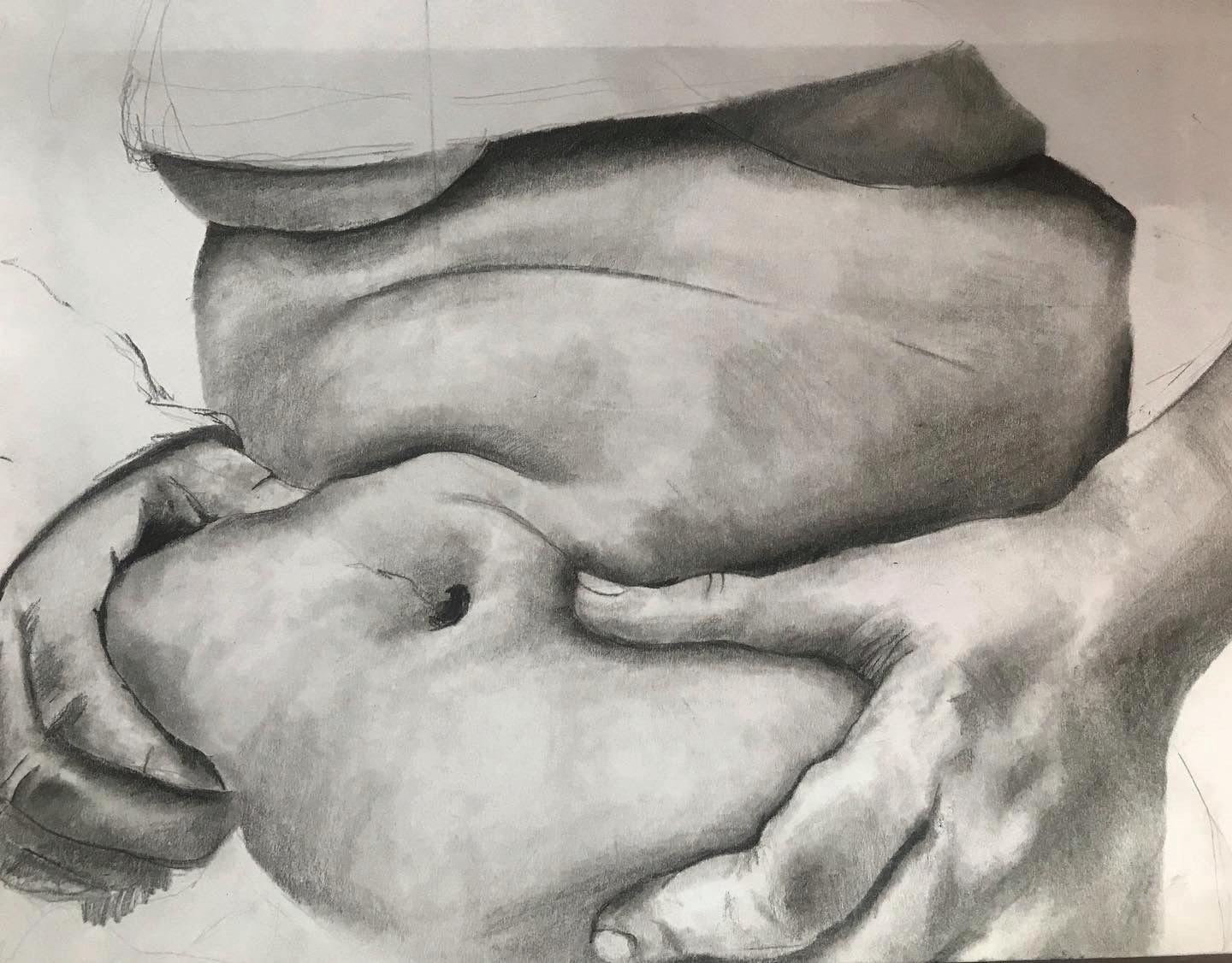
DO YOU WEAR CLOTHES TO HIDE OR ACCENTUATE YOUR BODY?
“DEPENDS ON THE DAY” “HIDE FOR CLASS, ACCENTUATE TO GO OUT” “BOTH, DEPENDING ON MY MOOD “I DO NEITHER” “I WEAR IT TO PROTECT MYSELF INSTEAD” “I HIDE WHAT I DON’T LIKE, AND ACCENTUATE WHAT IS DEEMED ATTRACTIVE BY SOCIETY” “ACCENTUATE, BUT WITHOUT BEING AUTOMATICALLY SEXUALIZED”

Soph
31
Design by
Lucina
 32 Photo by Mia Hernandez
Model by Olivia Porter
32 Photo by Mia Hernandez
Model by Olivia Porter
“Gaslighting” is a term commonly thrown around by our generation without regard to its heavy implications. To be gaslit is to be made to feel insane – to feel out of touch with your own reality. Gaslighting is a severe form of emotional abuse often used by people with narcissistic personality disorders or tendencies. The goal of a gaslighter is to control and manipulate their victims, keeping them wrapped around their finger and in a constant state of doubt about their own perceptions. Some speak about gaslighting far too nonchalantly, while others are blind to the fact that they are the victims of it, both of which are extremely detrimental.
The phrase originates from the 1944 mystery thriller Gaslight. In the film, the husband causes the gaslights in the house to flicker, yet denies anything is happening when his wife asks about it. He insists that it’s all happening in her head – that her imagination had gotten the best of her. He manipulates his wife so much so that she begins to doubt her own sanity. After this film became popular, many women started to reflect on their own relationships and realized that they too seemed to be a version of this doting wife, trusting whatever their husbands said without argument.
The conversation around gaslighting tends to center around intimate, romantic relationships. Although emotionally abusive partners are at the forefront of this issue, gaslighting can occur in any interpersonal dynamic. Parents can gaslight their children by invalidating their emotions, a manipulative boss can
take control of an assistant or subordinate, or a president can gaslight half of a country. All are possible, and all have happened. So how can you tell if you’re being gaslit?
The National Domestic Violence Hotline described six different forms that gaslighting can take. First is Countering, when someone tries to get you to question your own memory by saying something like, “I think you are forgetting what really happened.” Second is Withholding, when someone simply disregards you by pretending you are not making rational sense. Withholding can be summarized by the quote, “I don’t know what you’re talking about.” Third is Trivializing, which is when someone makes you feel like you are overreacting without reason and entirely invalidates your emotions. Fourth is Denial, when someone denies the blame of their actions such as by stating, “I never said that.” Fifth is Diverting, when someone questions your credibility, and sixth is Stereotyping, or using negative stereotypes about one’s race, gender, sexuality, nationality, or age to further manipulate and belittle them.
Butwhatmakesapersonvulnerableto beinggaslit?
In my own personal experience, it was my desire for attachment. I moved all the way from California to New York for college, all the while remaining in a long-distance relationship with someone from my hometown. I wanted to start a new and independent chapter of my life,
disconnected from my home, but this person manipulated me into believing I would never find another person who would support me like he did. He convinced me that a life without him would not be possible.
Months had passed before I realized that I had been successfully gaslit. The gaslighter has control over this moment, and even more so over our relationship.. Gaslighters can stop the conflict at hand, flip the blame back onto their partner, ease the anxiety, and most importantly, control the outcome. It sounds like an evil plan that might take months of preparation, but the interesting part is that many accounts of gaslighting are not planned or calculated. Researchers have said that many gaslighters are not even aware that they are doing anything manipulative. Their lack of self-awareness could cause them to think they are just saying it “like it is”, or that they’re just super honest.
In the long-term, gaslighting can severely deteriorate one’s self-esteem, mental health, well being, and ability to form healthy relationships. It is crucial to learn the truth about gaslighting so you can recognize signs of this manipulation in your own life. Just because this term has become normalized on the internet, it cannot be normalized in our relationships.

Design by Jade Cyrus 33
model olivia porter
photo mia hernandez

The 3 circles of he lovebomb, the

three ci lovebomb,

34
Photo by Mia Hernandez
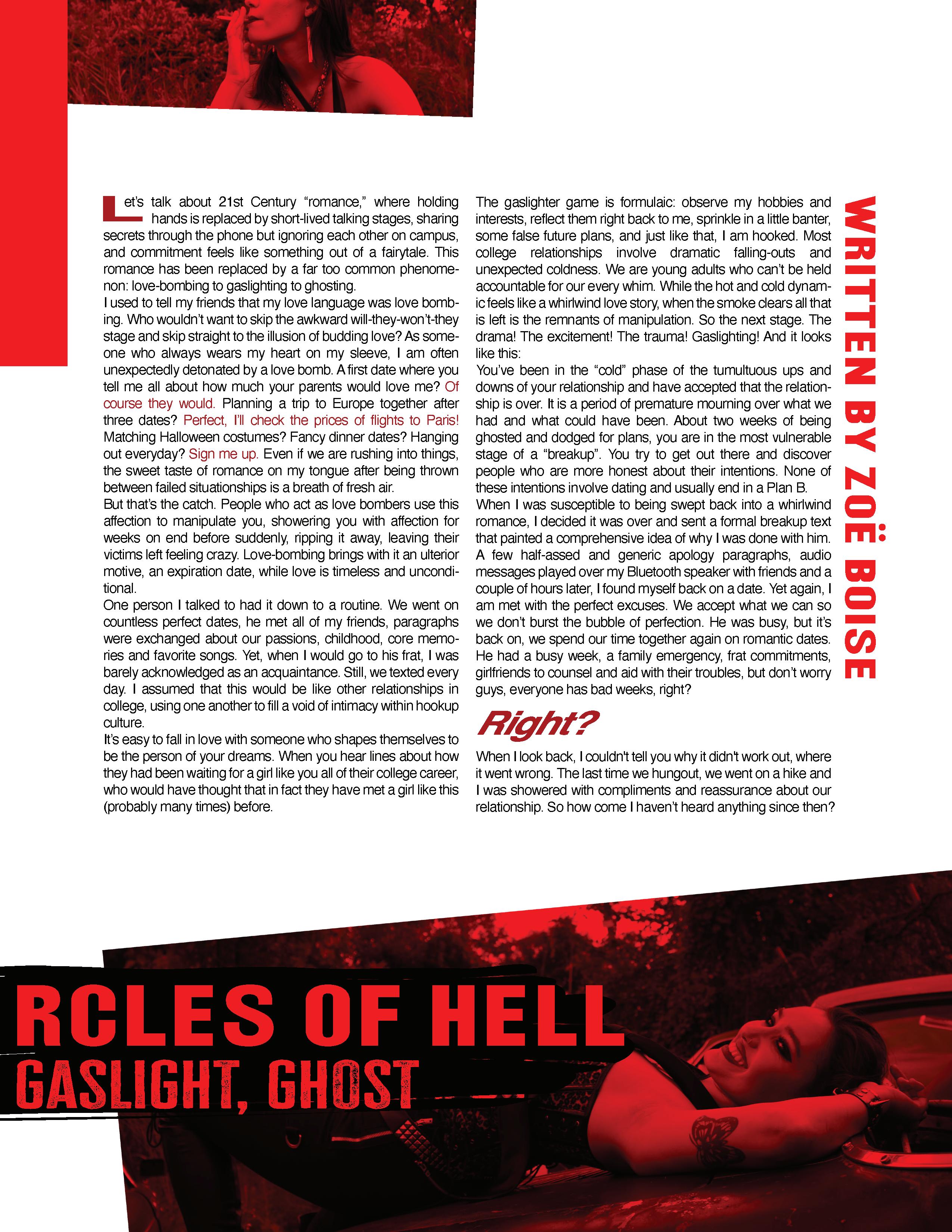
35
Design by Jade Cyrus
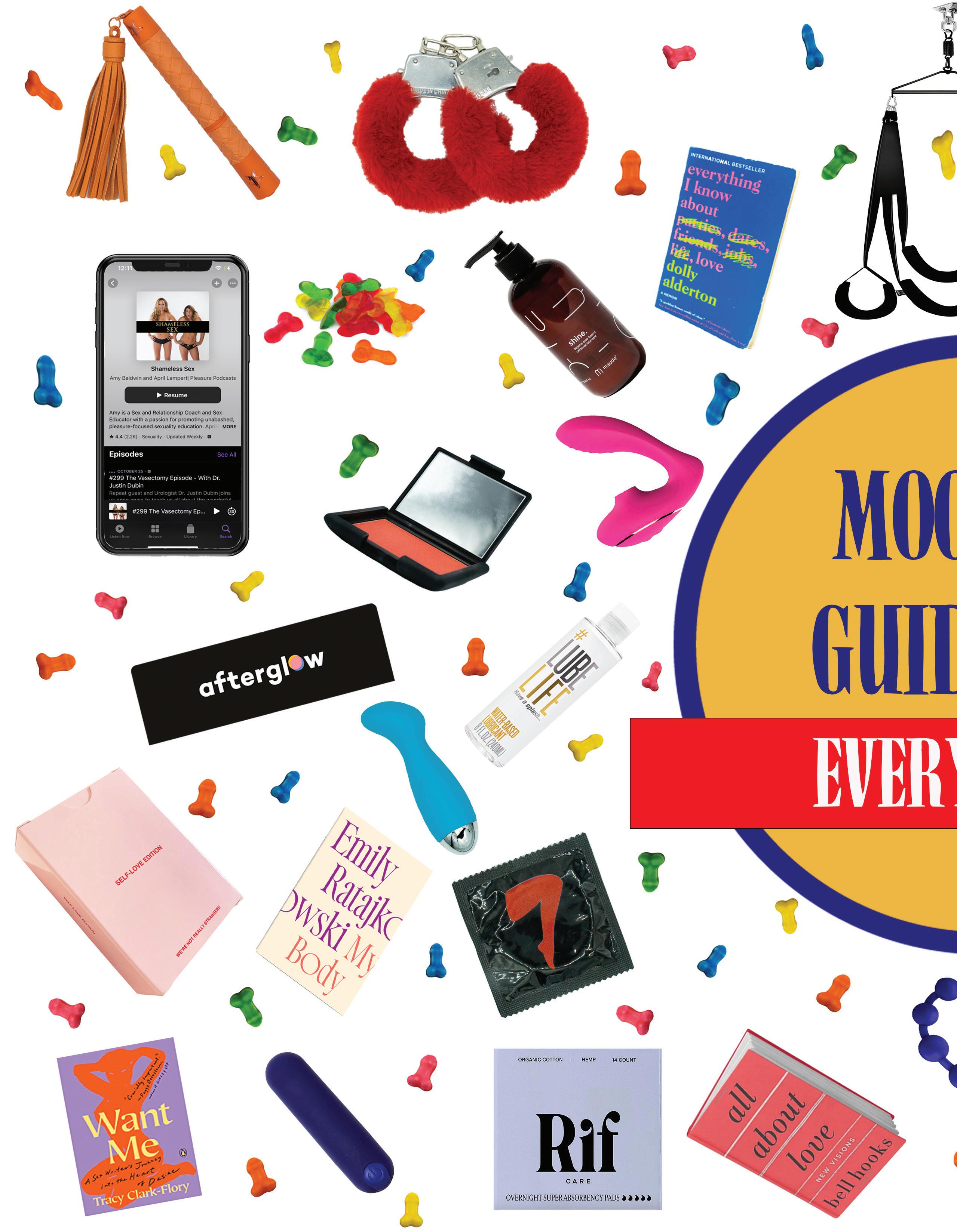
36

by Olivia Swaab 37
Design
Wear the Revolution
 By Colette Goldstein
By Colette Goldstein
Discard what you think you know about brothels. This is Siete Rojo. It is the 80s. A neon red sign that reads “7” beams vibrantly over one of the most renowned Venezuelan brothels of its time, Siete Rojo. But it isn’t the fluorescence
of the sign that draws us here—it is the legacy that this brothel breathes into our modern ideas of sex work. Enter the brothel. Encounter the abundance of sex workers getting ready for another eventful night, and watch the way a workplace can mold

38
Photo by Mia Hernandez Model by Mckenna Doak, Layla Gold, and Ryan Hermann
into a home. This is Siete Rojo: a place that housed up to 100 consenting sex workers, a place where condoms were enforced, a place where mandatory, weekly health checkups were held, and the health of the workers was fought for.
It is beneath the neon red “7” where we find a story about brothels that is hardly discussed: the story of a brothel-owner/father diligently fighting to safeguard the health and wellness of the brothel’s workers—even in a time when this was deemed “bad for business”; the story of a brothel driven by familial bonds, attuning the workplace to respect and care; the story of a brothel that sought to redefine the way brothels were both construed and conducted, seeking to destigmatize sex work in the process.
That was the Siete Rojo legacy: a reconstructed idea of how sex work can prioritize the respect & health of its workers as much as it prioritizes the sex & pleasure of its clients. Legacies like these do not die easily. Forty years later, Siete Rojo lives on; however, not in
Reminiscent of the 80s sensation, the clothing brand “Siete Rojo,” carries the legacy of its brothelpredecessor to the present, shining with the vibrant light of the past establishment. With eye-grabbing phrases plastered on hoodies and hats (like a trucker hat that boldly states, “Mom I just Paid for Sex”), this red-hot clothing brand aims to promote conversations about sex work and destigmatize the negative social conceptions surrounding it.
In other words, Siete Rojo is, once again, rebranding sex work. Founded by the son of the brothel’s original owner, Alvaro Teran Landaeta, the clothing brand continues to uphold the importance of representation in the world of the taboo. This time, however, with a more modernistic approach.

For one, all clothing that is sold at Siete Rojo is sustainably sourced (in the words of its owner, “to keep the strip clubs open, we must keep the planet alive”). Additionally, a percentage of the
brand’s proceeds are donated to SWOP-USA (Sex Worker Outreach Project - USA) a current organization that fights for the fundamental rights of sex workers in the U.S.. Siete Rojo also provides its top-purchasers with a VIP experience at a strip club, inviting customers to experience the sex-scenes of today.

The legacy of Siete Rojo has always been much bigger than a brothel, and today it is much more than a clothing store. Siete Rojo is a revolution—that is its legacy.
Wear the revolution. Wear Siete Rojo.
 40 Photo by Mia Hernandez
Model by Mckenna Doak and Ryan Hermann
40 Photo by Mia Hernandez
Model by Mckenna Doak and Ryan Hermann

41
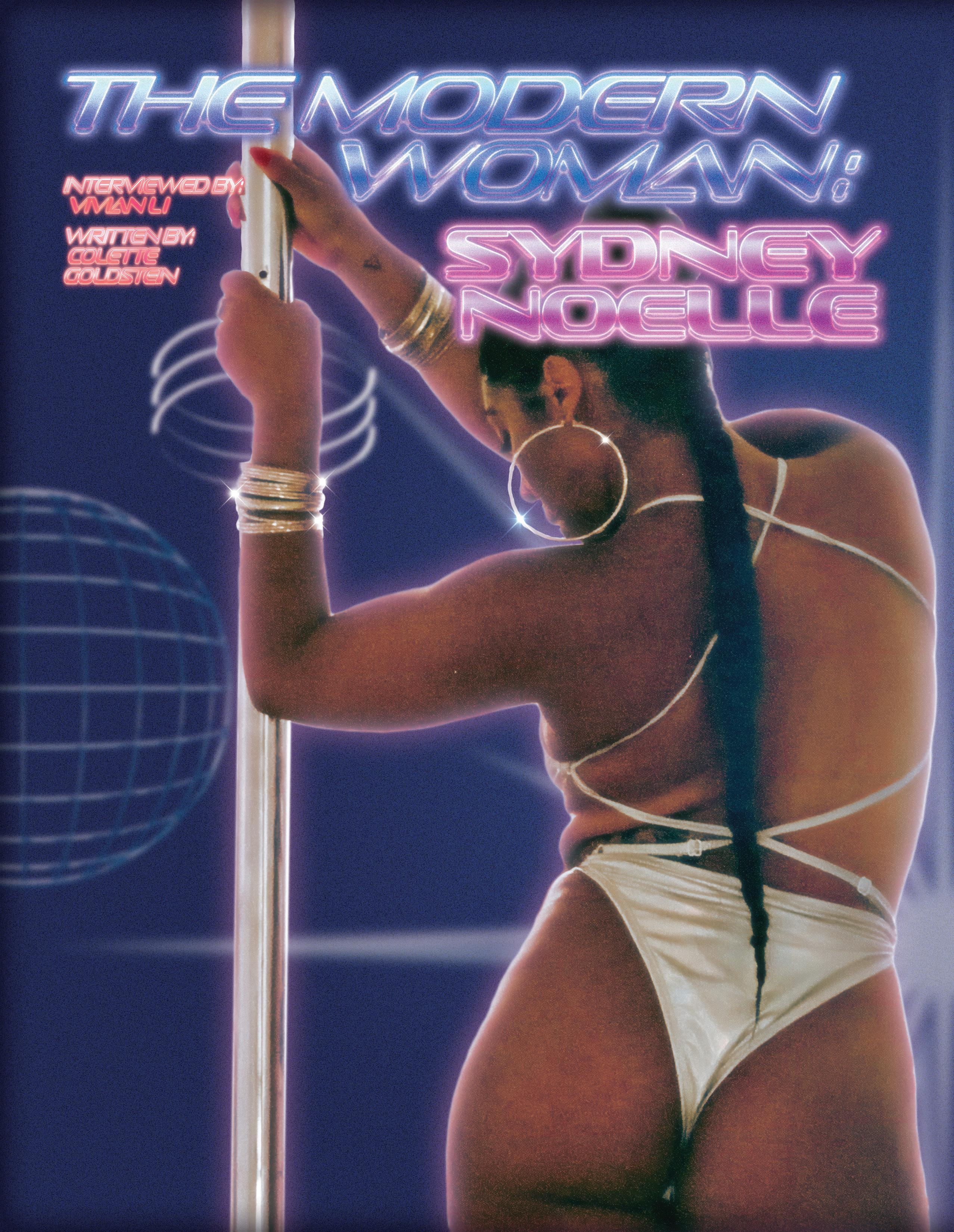 42 Photo by Jah Levy
Model by Sydney Noelle
42 Photo by Jah Levy
Model by Sydney Noelle

43
Design by Lucas Marangoni
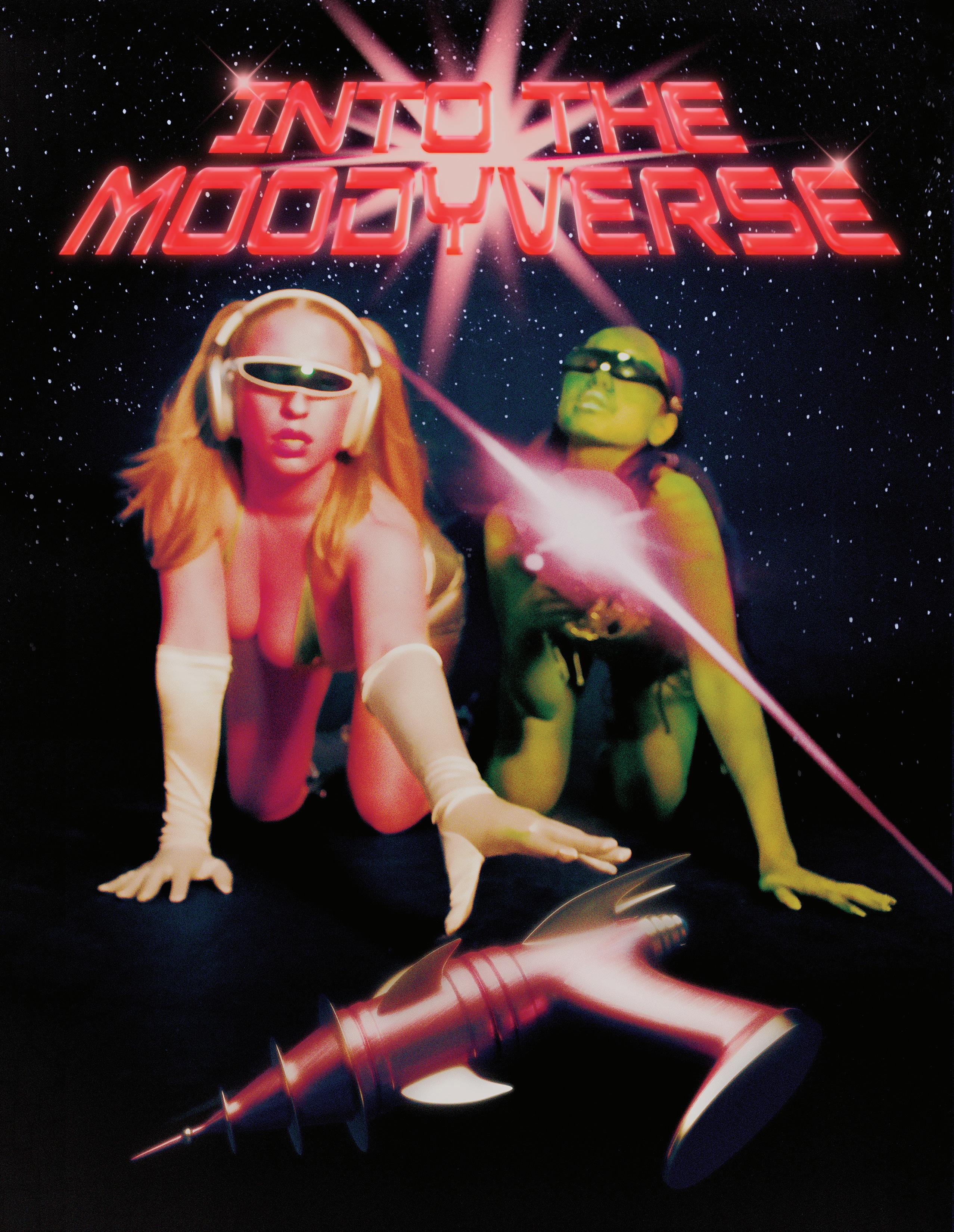 Photo by Jace Williams Model by Annie Greenfield and Zhe Zhong 44
Photo by Jace Williams Model by Annie Greenfield and Zhe Zhong 44
 Design by Lucas Marangoni 45
Design by Lucas Marangoni 45

46

47
Design by Lucas Marangoni
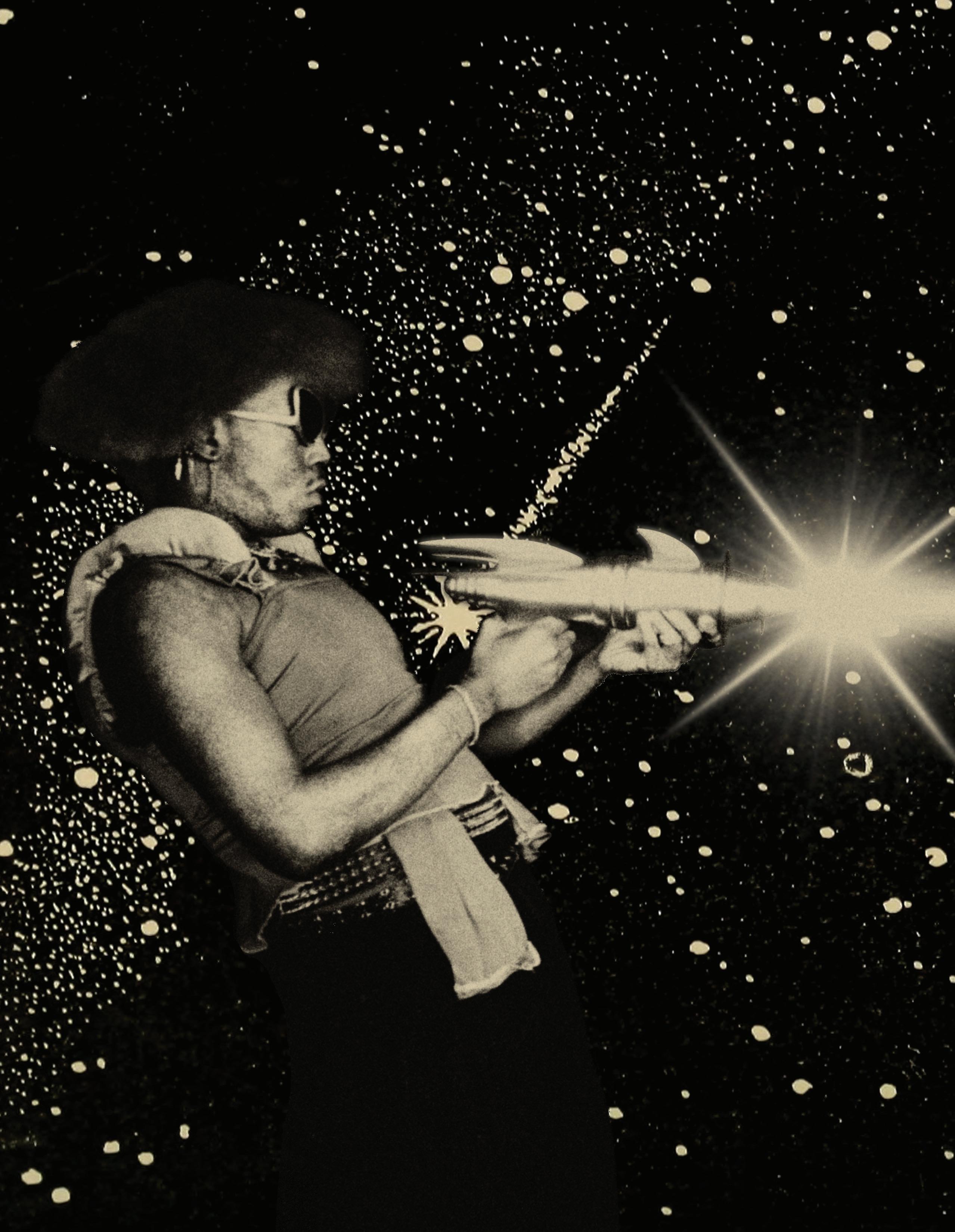 Photo by Mia Hernandez
Model by Jace Williams and Nick Robbins 48
Photo by Mia Hernandez
Model by Jace Williams and Nick Robbins 48
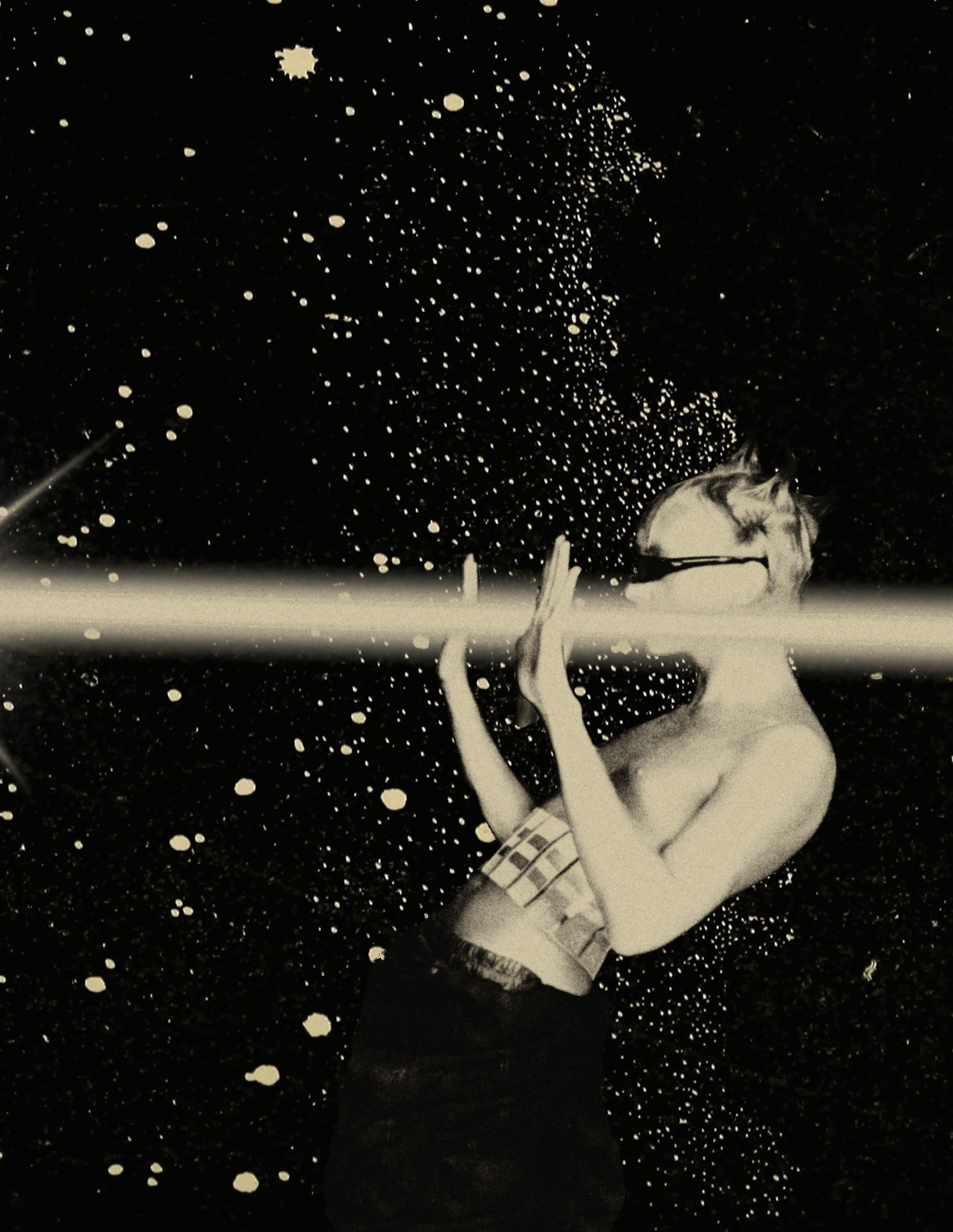 Design by Lucas Marangoni
Design by Lucas Marangoni
49
Written by: Margo Moran and Isabel Bekele
The year is 1960, and you are staring down the barrel of something you have only heard about in whispers. Perhaps you’ve procured this tool on your own, or maybe your doctor has prescribed it as a treatment for hysteria (a medical diagnosis for women having too many thoughts or feelings that wasn’t removed from the DSM until 1980). You plug in this phallic thing, and it starts to shake, harder than you’ve ever felt something shake before. It tickles your hand, and your forearm, and slips under your petticoat until your kitten heels are thrown in the air in ecstasy.
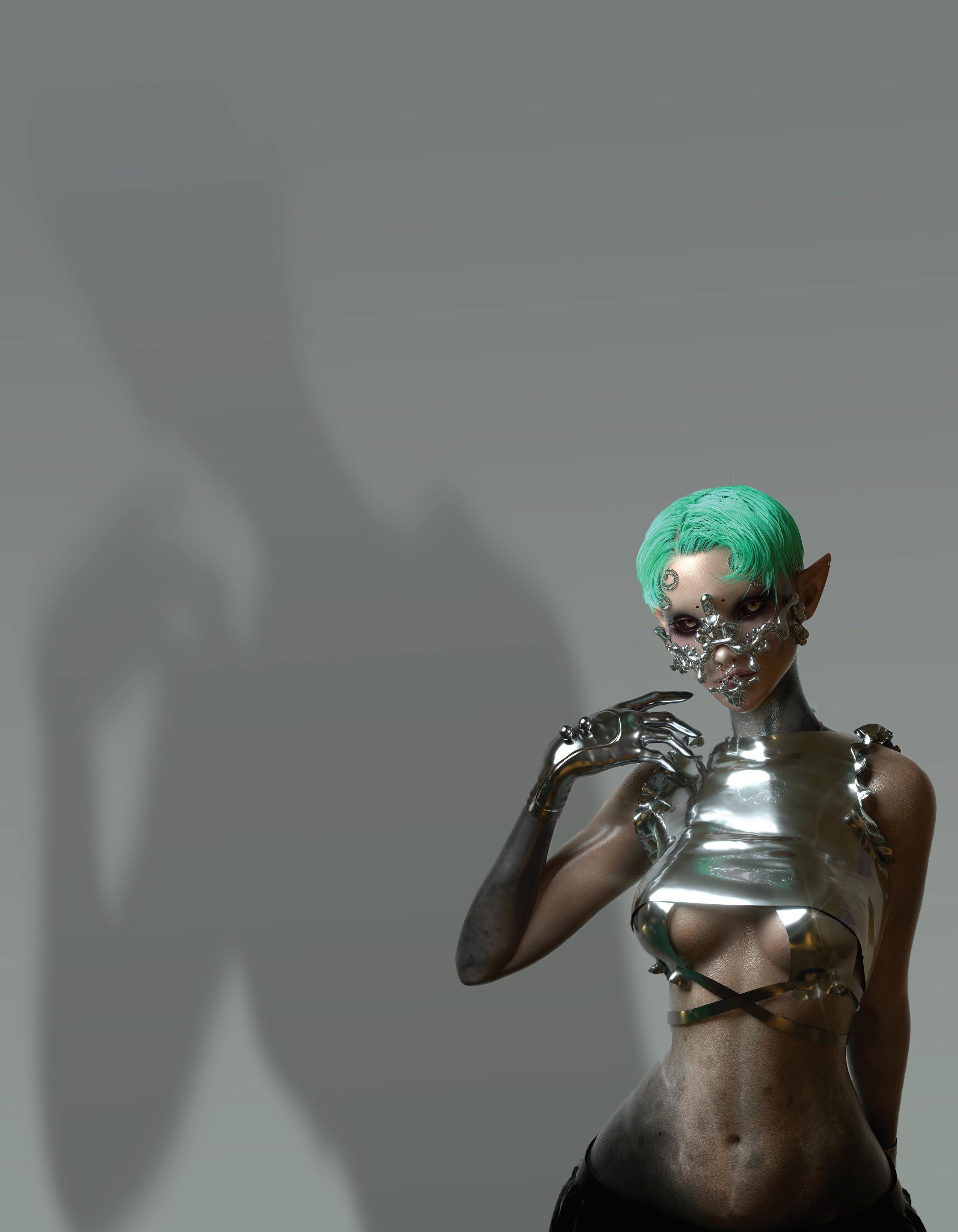
You have no idea that your granddaughter, in the year 2022, is laying in her bed with her platform Doc Martens pressed against the wall, being edged by a rabbit internal vibrator, remote controlled by a partner halfway around the world.
Since cavepeople shaped a dildo from stone and Cleopatra filled a gourd with bees to stimulate her clit, sexual desire has driven innovation at a level paralleled by war. Desire didn’t stop breeding technological progress at the early dildos; this was only the beginning.
Technology has always been a uniquely powerful form of sexual liberation, creating avenues of pleasure that couldn’t otherwise be accessed. However, it can also lead to sexual violence and a lack of intimacy, and should be approached with caution. One of the most liberating functions of sexual technology is sex toys. From dildos, vibrators, and butt plugs to nipple clamps, restraints, and cock rings, sex toys can be used with or without a partner, freeing you from relying on other people for pleasure. Particularly for straight women who are statistically less likely to be satisfied with a male partner, this is an absolute game changer.

Sex toys let you find out what you like and how you like it, not only providing satisfaction but also helping coach future partners in how to get you there. Sex toys are not deviant, not dirty, and CERTAINLY not a sin: they are the past, present, and future of excellent sex.
Technology has even changed the way we find people to have sex with. Dating apps have become a norm for young singles, and meeting someone “organically” has become something you brag to your friends about, as the cinematic fantasy of stumbling across someone in real life becomes increasingly rare. Experiences on these apps can range from empowering, to soul-crushing, to life-endangering, and which app(s) you use can play a role in that. Attraction-based apps such as Tinder, Bumble, or even Grindr require you to advertise yourself in a way that compels people to desire you. Regardless of how subtly you execute this online persona, most matches will still open the conversation with a cheeky (pun intended) comment about how fat that ass is, and how it would look even better sitting on their face. While dating apps don’t always slaughter romance the way that many believe, they definitely aren’t built to facilitate it. To a certain extent, the same can be said for porn.
One of the most well-known intersections of sex and technology, the pornography industry has been at the forefront of this conversation. Porn can do huge harm to both its performers and viewers. Human trafficking is rampant in the industry to recruit performers into involuntary sex work. From a viewer’s perspective, porn is the lowest form of sexual education, while at the same time often serving as the most accessible kind. Young people, especially young men, often turn to violent porn to learn how to have sex, resulting in potentially inconsiderate sexual partners. Porn addiction is also a very real problem that can weaken real-life intimacy and lead to sexual
performance issues when sleeping with a partner. Porn rarely focuses on women’s pleasure, safe kink, consent, realistic queer sex, or open communication between partners, which makes it an extremely poor example of what sex should look like. Morally policing ethical porn intake is gross, but learning sex from a video of a 20-year-old jackhammering his stepmom is, perhaps, grosser.
For all of the drawbacks of infusing technology into sex, the positives are truly remarkable. From meeting potential soulmates on the internet to learning how to have sex through a a screen, technology has been a driving force in reinventing what it means to be intimate.
Welcome to the new frontier of ground-breaking sex– it’s been waiting for you.
50 Design by
Soph Lucina
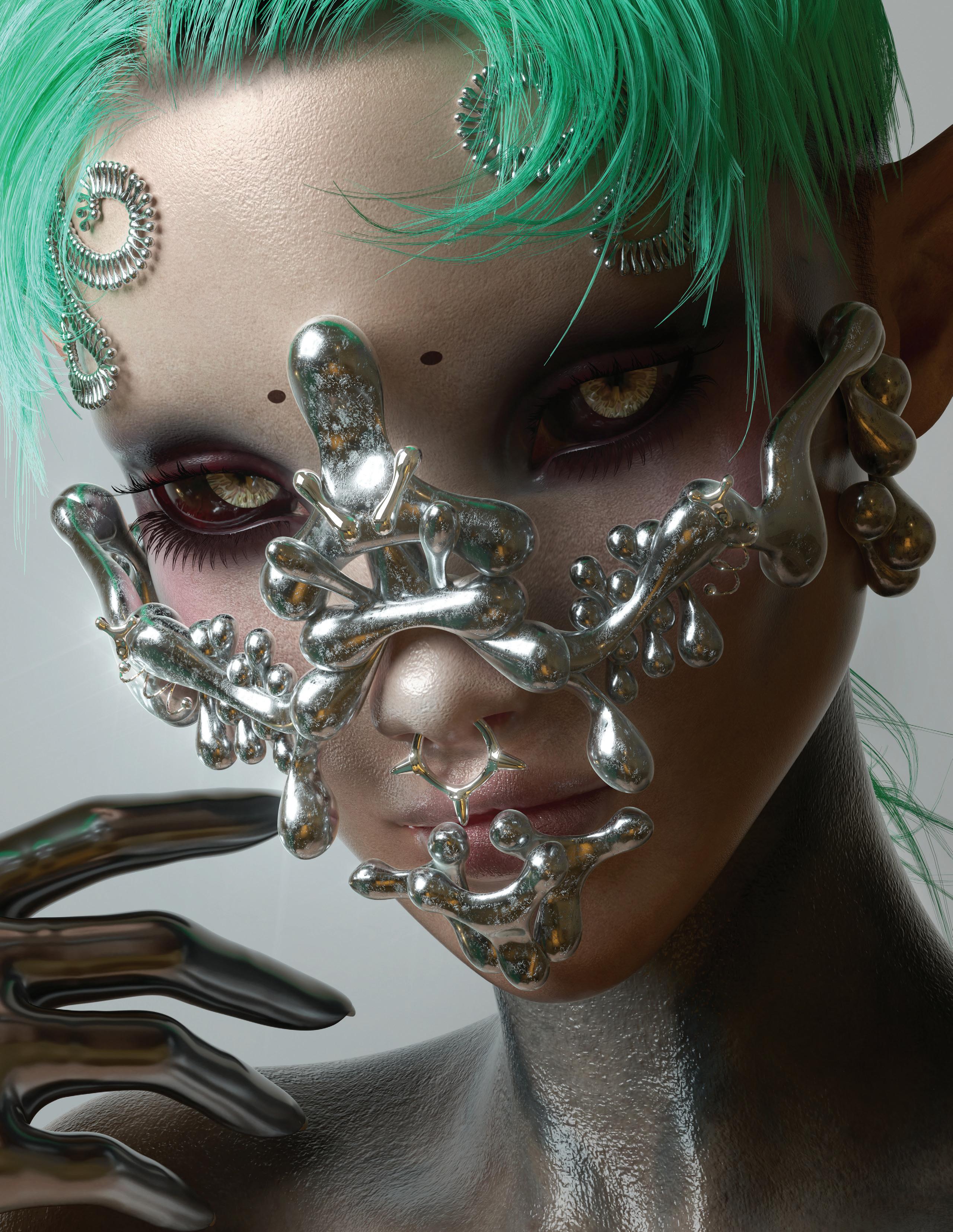
Art by @laliett on IG 51
Thank God I wore my Red Bottoms today, I thought to myself, weaving through the lifeless bodies. The pools of blood were unavoidable. I crouched next to one of the newly departed. A pin accompanied her blood-stricken blouse, “My Body My Choice.”
I scoffed. “Go figure.”
Standing back up, I pensively looked down Fifth Avenue.
A city once filled with piercing car horns and bustling people - now somber with the dead.
What was once the Concrete Jungle was now a Concrete Headstone - a mass grave.
Hundreds of eyes were glossed over in a state of eternal pain, cemented in their final moments of fear. The government’s new reparation program on abortion meant that any woman seeking an abortion would be met with a gruelling yet necessary death.

A mere 24 hours ago, I was reporting the anniversary celebrations of St. Patrick’s Cathedral. Now, I stand in the midst of a scene reminiscent of the second coming of Christ. Sinners lay before me as they are banished to eternal damnation - the State acting in the role of God.
The translucent pools of blood reflect the light like stained glass windows in the St. Patrick’s Cathedral. This affinity reminded me that both occurrences were in His name.
I, a steward of the good news and holy gospel, was tasked in informing the American public that nearly 10,000 women had been exterminated thus far.
I swiftly made my way back to the set. The studio cut to me and I
began my on-scene report.
“...the government is making it ever so clear that their efforts are progressing rapidly to exterminate all who have had abortions or those planning to. Please contact the government if you are aware of anyone who has had an abortion. Aiding in this fight is your job, not only as His children, but as citizens of this republic.”
Shrills echo in the distance, accompanied by sharp booms in a methodic cadence.
KILLING THOSE WHO KILL
WRITTEN BY JACK MCCARTY EDITED BY AUDREY WEISBURD AND OLIVIA SWAAB
“Are they killing more women?” I ask the cameraman.
“Sounds like it. Damn, you’d think they’d learn by now.” he snidely responds.
“I guess it’s what they deserve?”
“That’s what happens when you’re not just a criminal, but a sinner. Eye for an eye,” he replies.
He motions to the banner mounted on the stop light. Rippling in the wind, it reads, “Kill Those Who Kill - In the name of The State in the name of God”
The bloody cries grow closer.
A stampede of women come running towards us, their feet pounding against the asphalt. Illuminated by an opening in the clouds - they seem ethereal.
As they leap around the dead it becomes evident - they are on a mission to not only to stay alive but to spread what they believe to be virtuous. This virtue - evident in their exclamations.
These exclamations run the gamut from the classic, “MY BODY MY CHOICE!” to the nuanced “WE WILL NOT GO BACK!”.
All of the sudden the city is alive again. These women, these “My body my choice” women, were the supposed antithesis to the concept of life. Though, in this moment, in this otherworldly experience of them championing, they prove to be the strongest source of light.
Were they the true martyrs in this situation? Was I on the side of evil?
Spending so much time focusing on their apparent ‘wrong doings’ we had forgotten that they too were a life. Lives that had the power to ignite a fire into a city we had burnt out. A city we killed by our pro life agenda. An agenda now painfully lost in translation.
52
Photo by Anahit Yakubovich Model by Elinos D’Estais Styling by Petrea Sehested
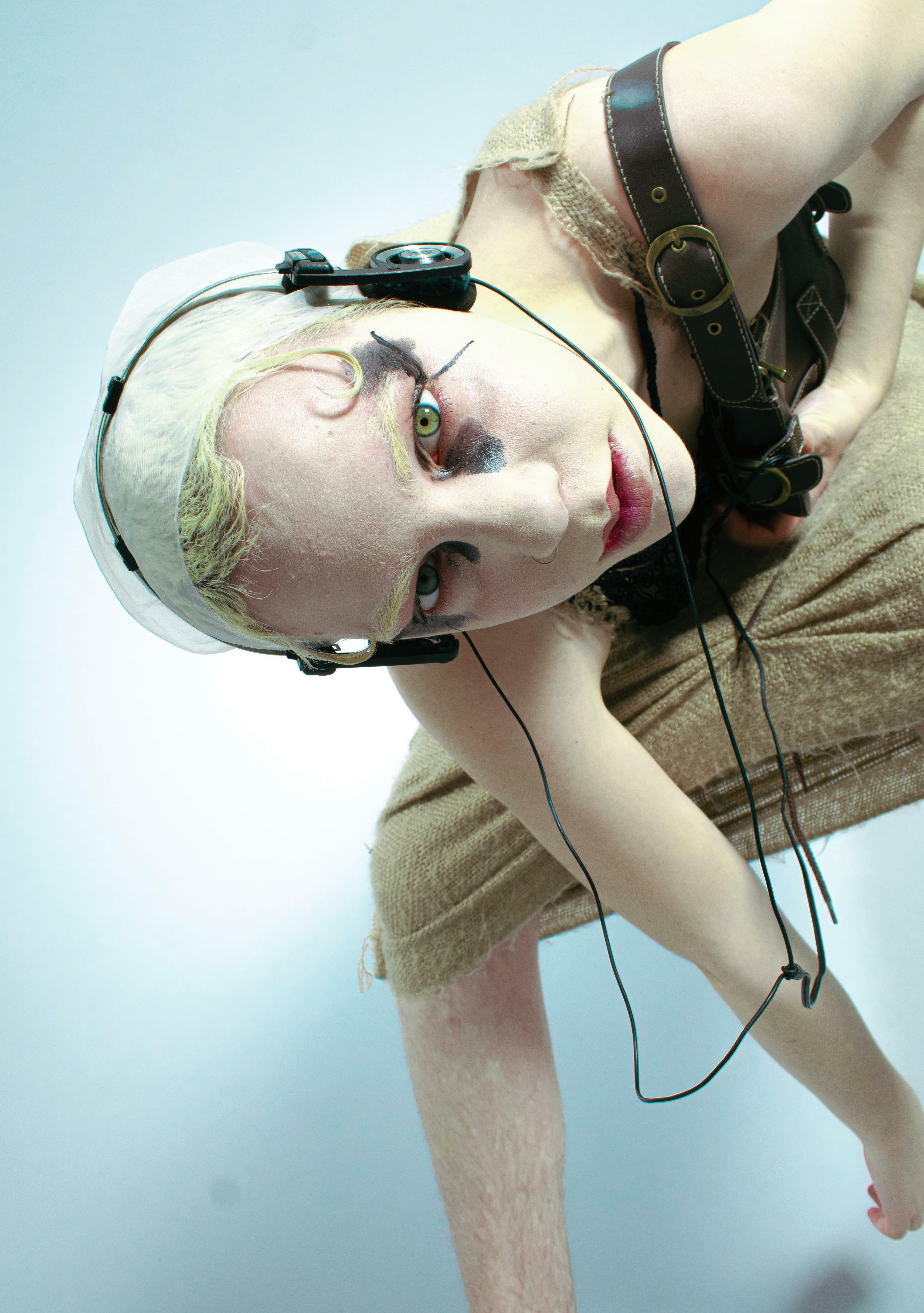
51
Design by Soph Lucina
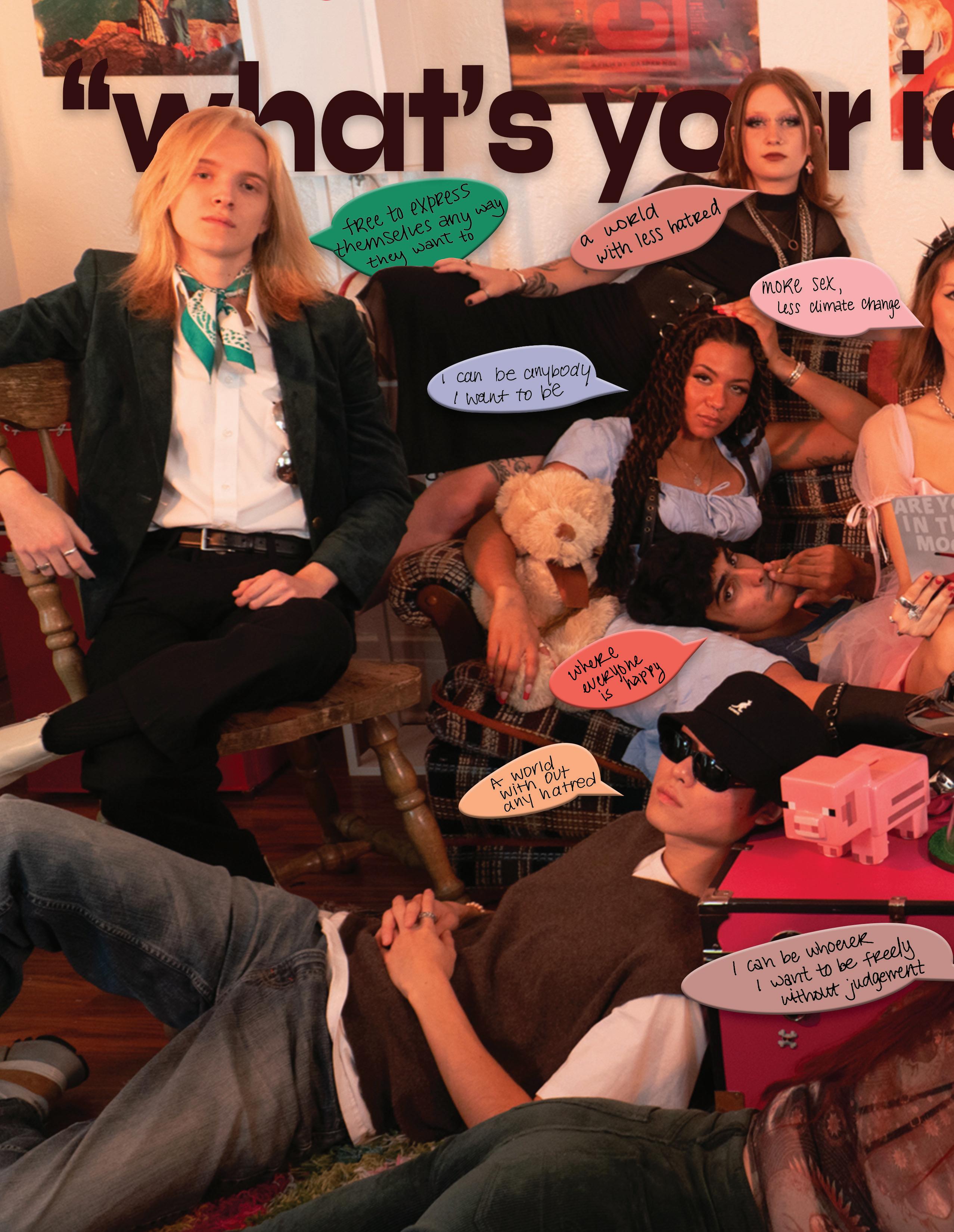
54
Photo by Soph Lucina Model by Ben Webster, Anish Vasudevan, Jaxx Whitney, Fatumata Sow, Ruto Santori, Roger Moore, Jennie Bull, Maddie Tantillo, Tahryam Toure, Oji Anderson
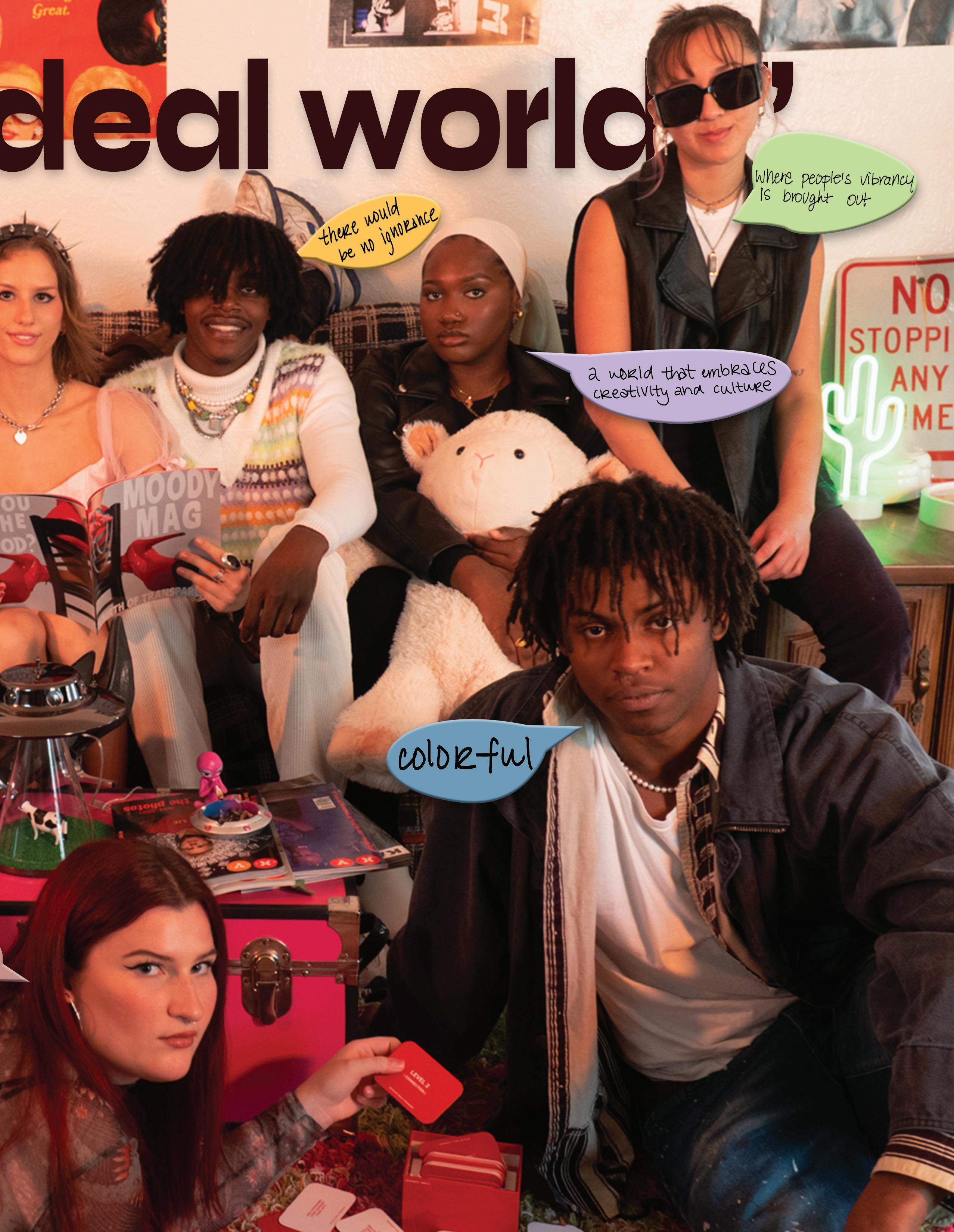
55
Design by Jennie Bull
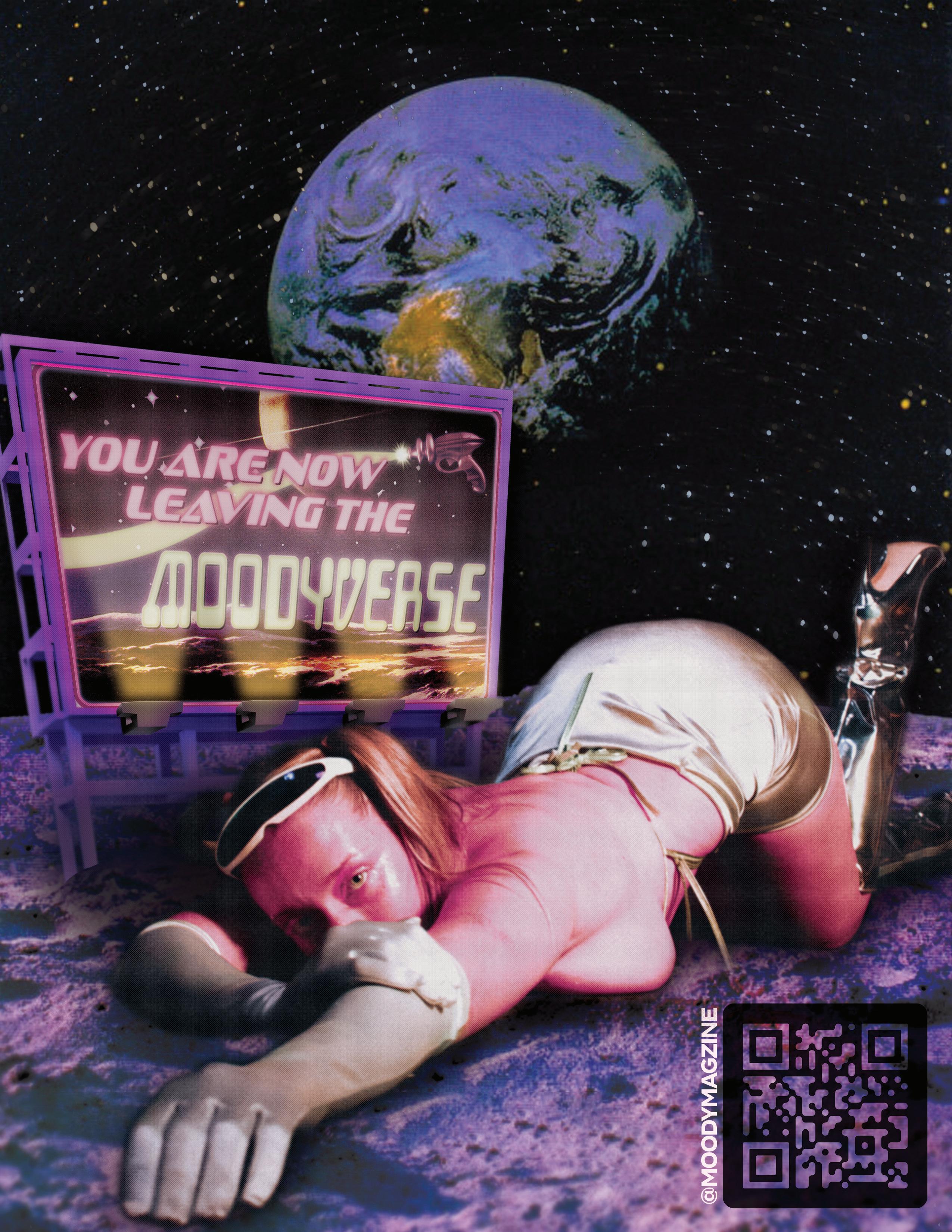 Cover and Back Cover by Lucas Marangoni
Cover and Back Cover by Lucas Marangoni









 Design by Madison DeVera 9 Model by Aviwe Himlin Mayekiso
Design by Madison DeVera 9 Model by Aviwe Himlin Mayekiso

 Written by William Khabbaz
Written by William Khabbaz












 Model by Katie McPeak 19
Model by Katie McPeak 19



















 32 Photo by Mia Hernandez
Model by Olivia Porter
32 Photo by Mia Hernandez
Model by Olivia Porter







 By Colette Goldstein
By Colette Goldstein



 40 Photo by Mia Hernandez
Model by Mckenna Doak and Ryan Hermann
40 Photo by Mia Hernandez
Model by Mckenna Doak and Ryan Hermann

 42 Photo by Jah Levy
Model by Sydney Noelle
42 Photo by Jah Levy
Model by Sydney Noelle

 Photo by Jace Williams Model by Annie Greenfield and Zhe Zhong 44
Photo by Jace Williams Model by Annie Greenfield and Zhe Zhong 44
 Design by Lucas Marangoni 45
Design by Lucas Marangoni 45


 Photo by Mia Hernandez
Model by Jace Williams and Nick Robbins 48
Photo by Mia Hernandez
Model by Jace Williams and Nick Robbins 48
 Design by Lucas Marangoni
Design by Lucas Marangoni







 Cover and Back Cover by Lucas Marangoni
Cover and Back Cover by Lucas Marangoni